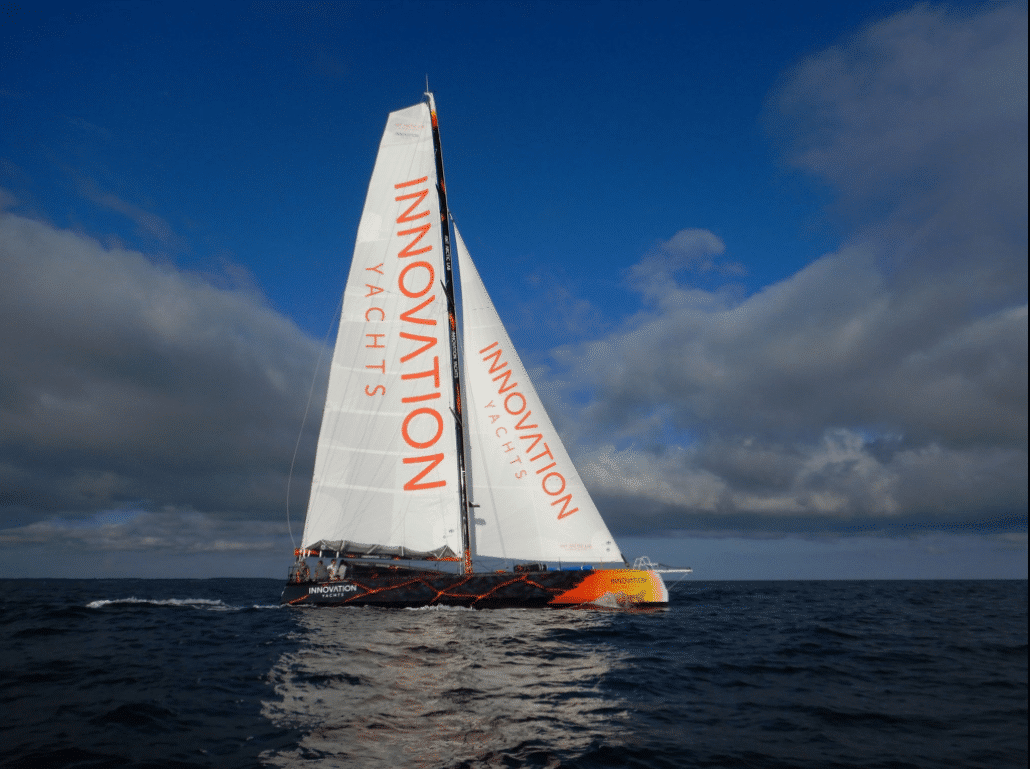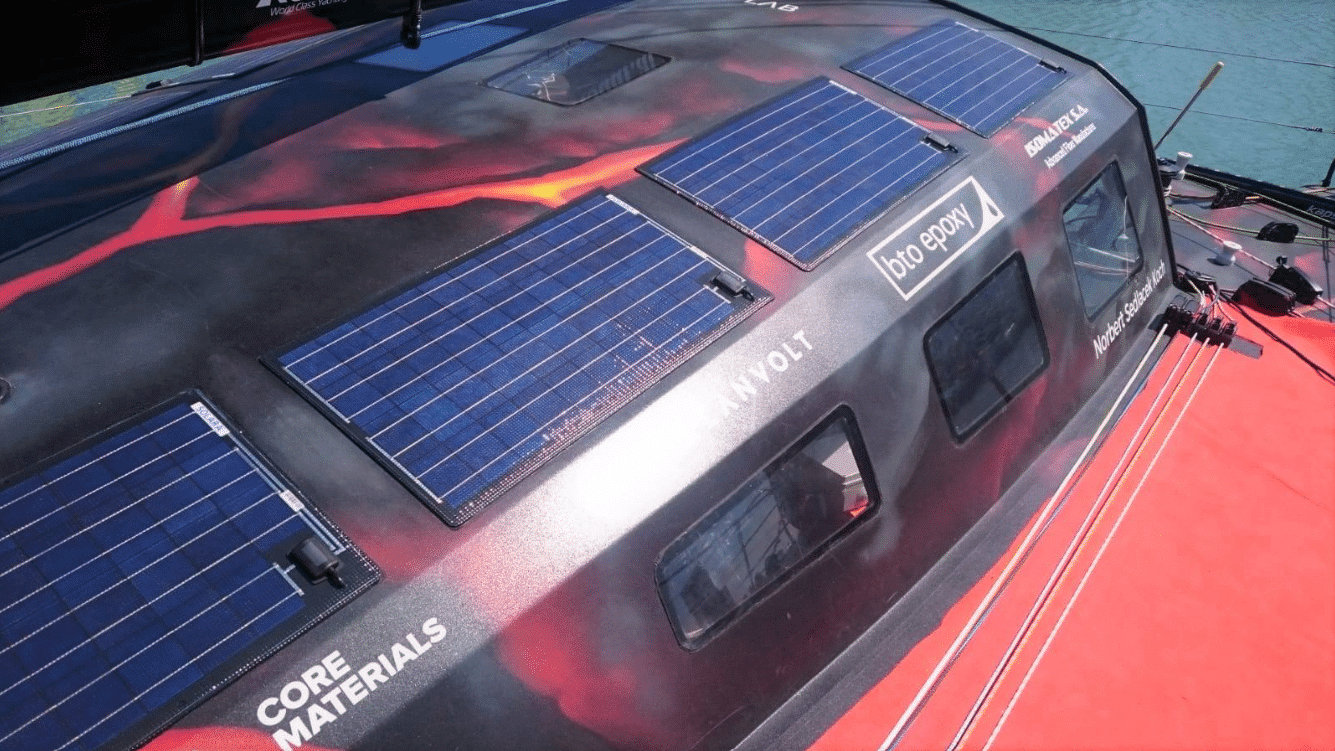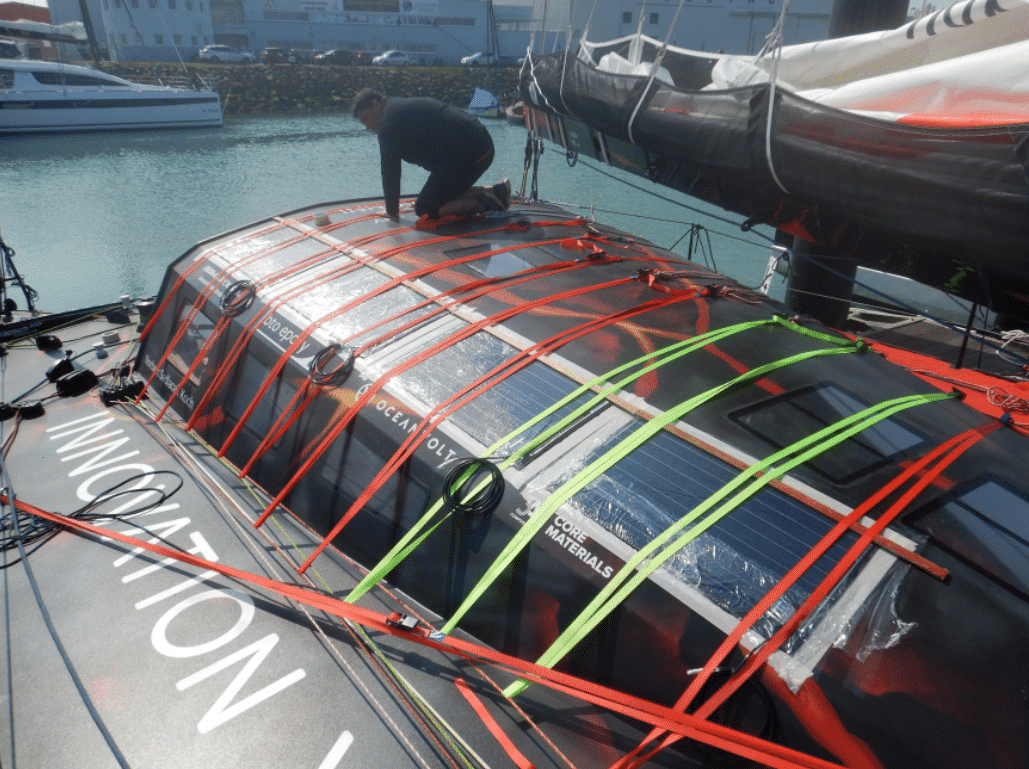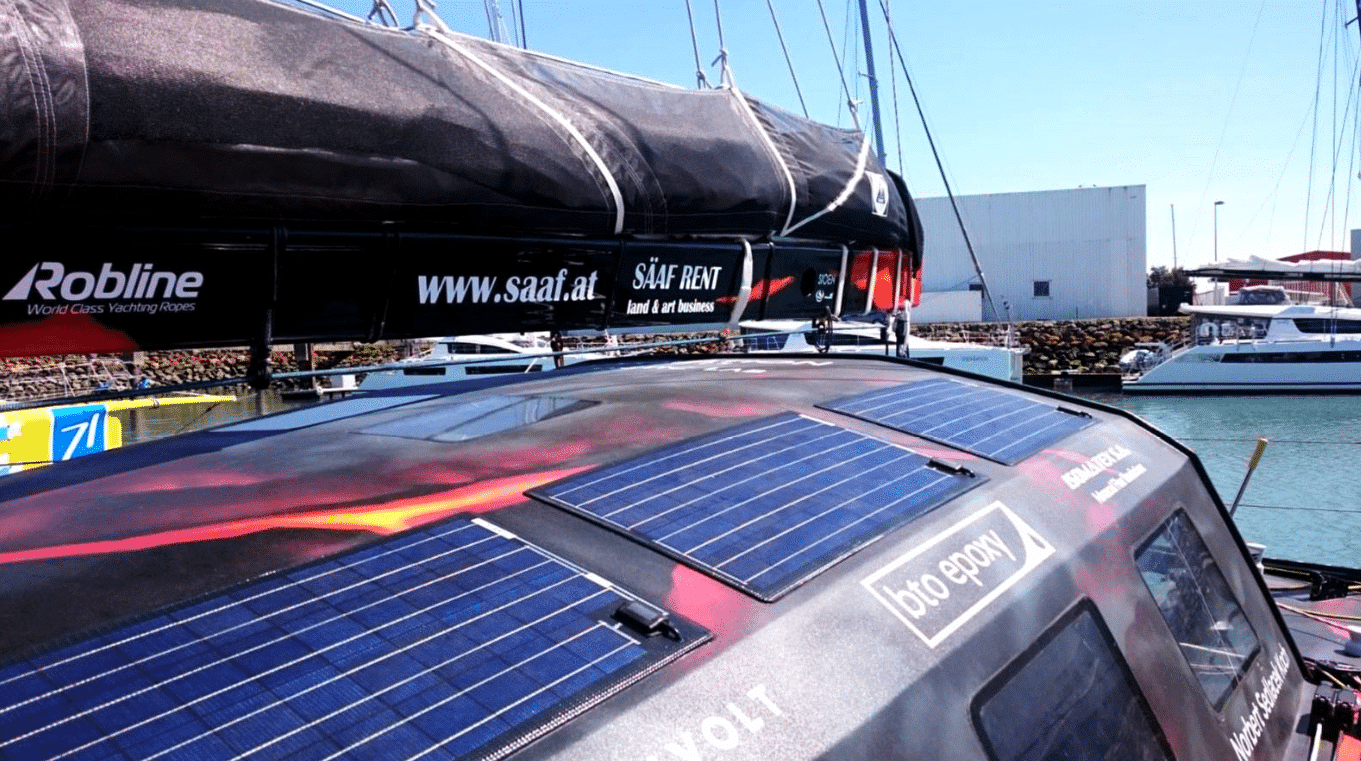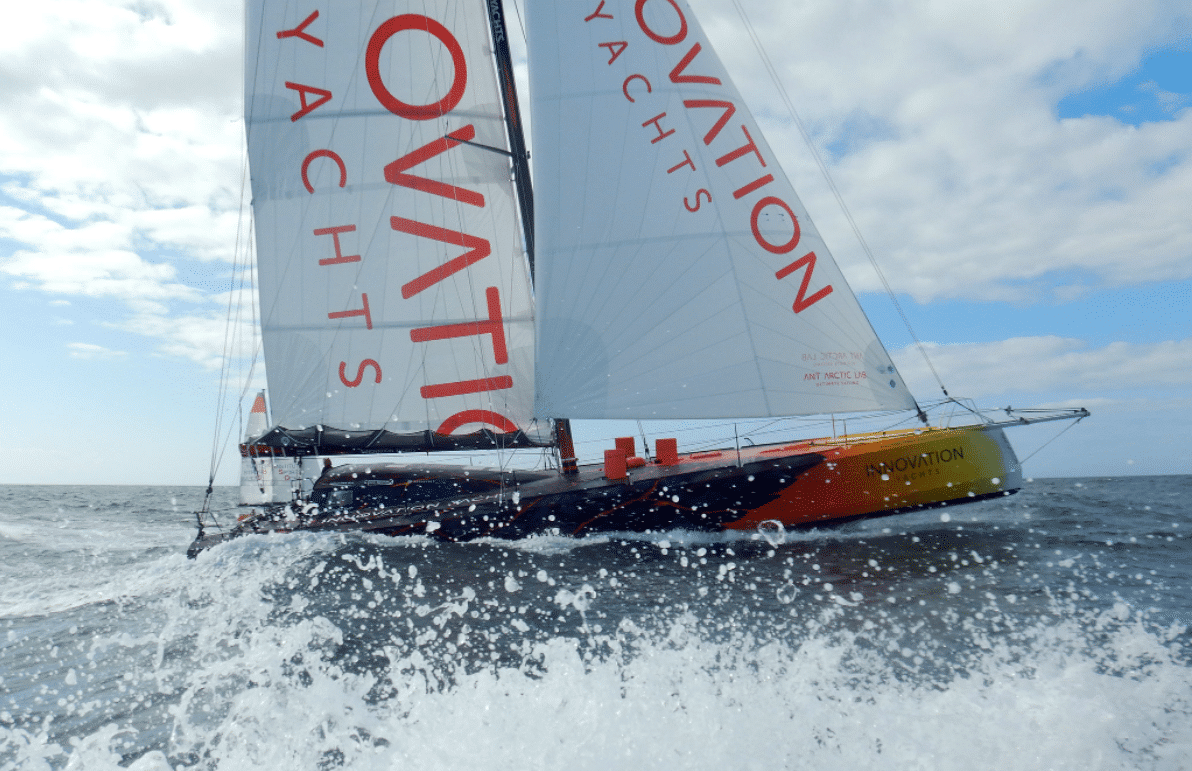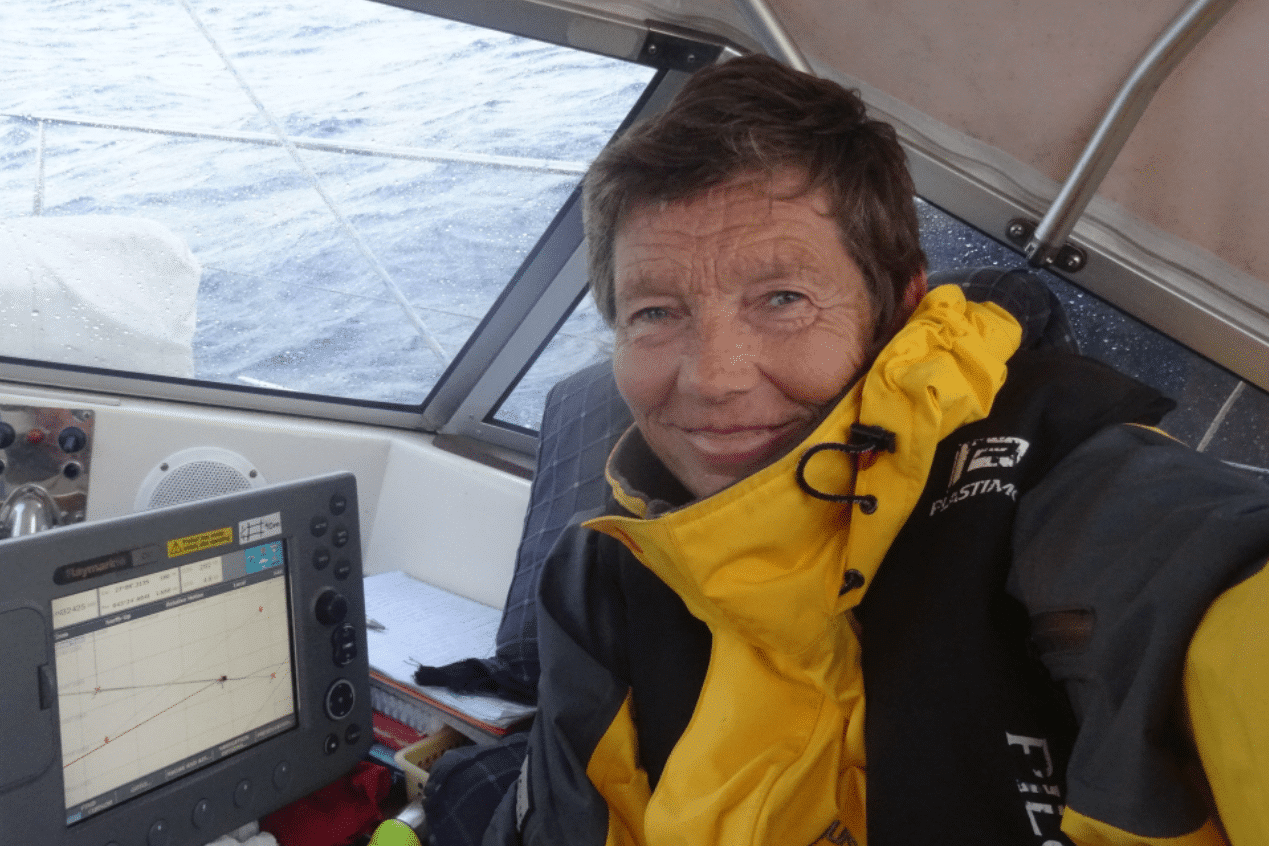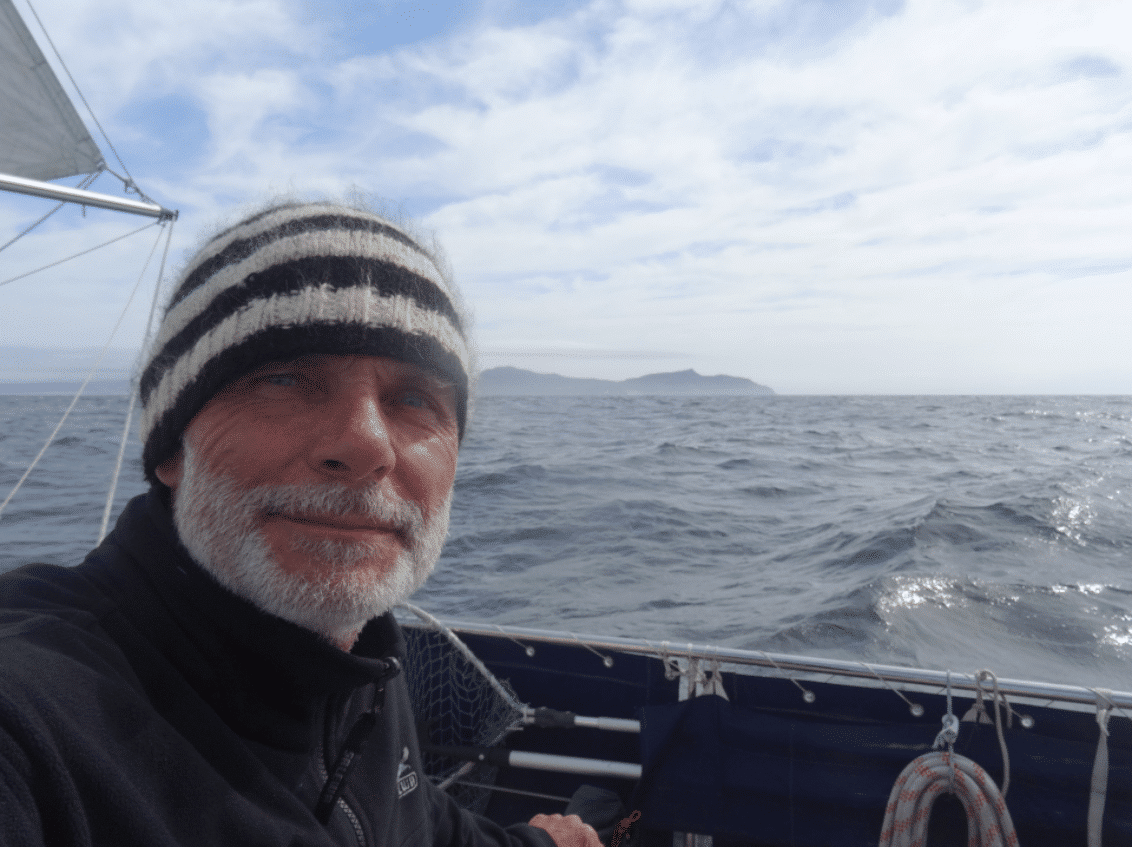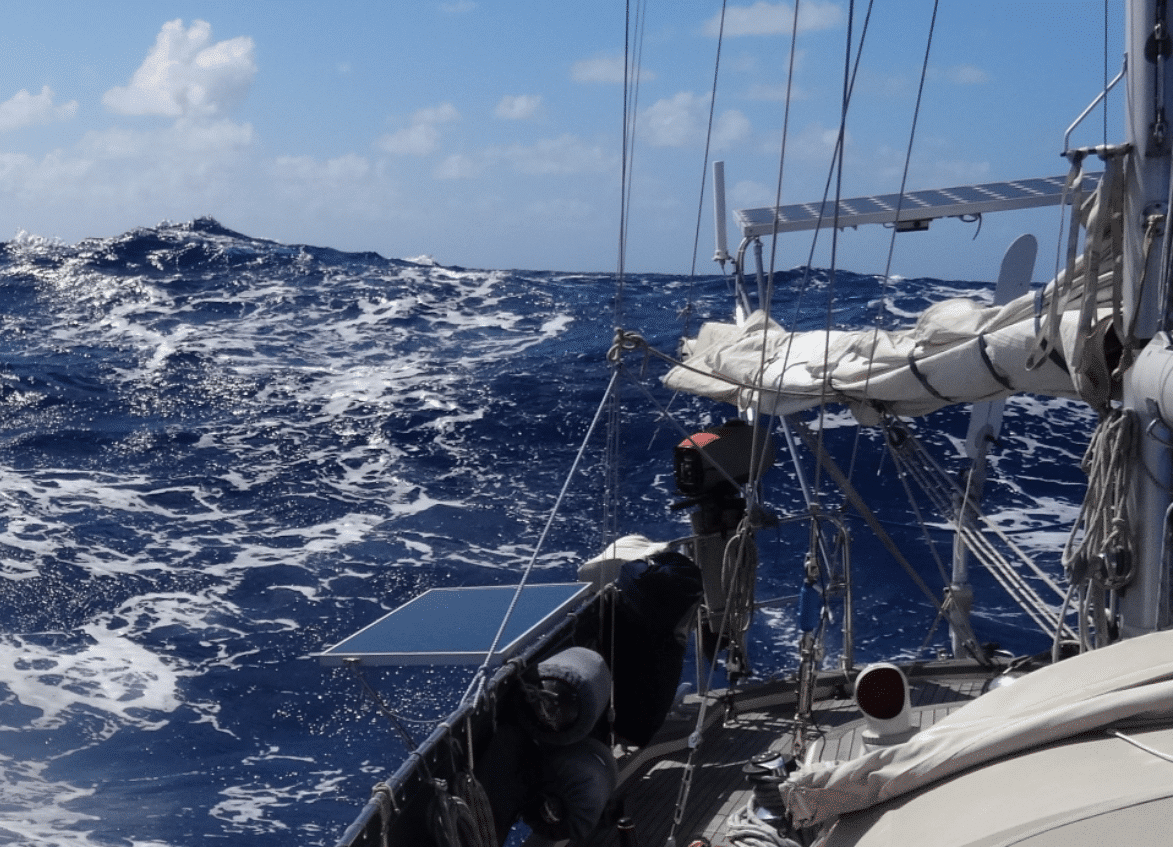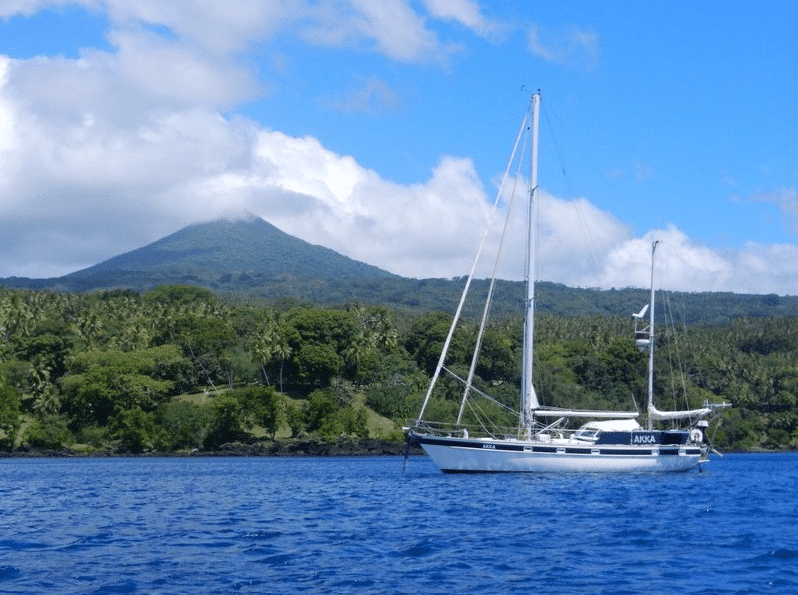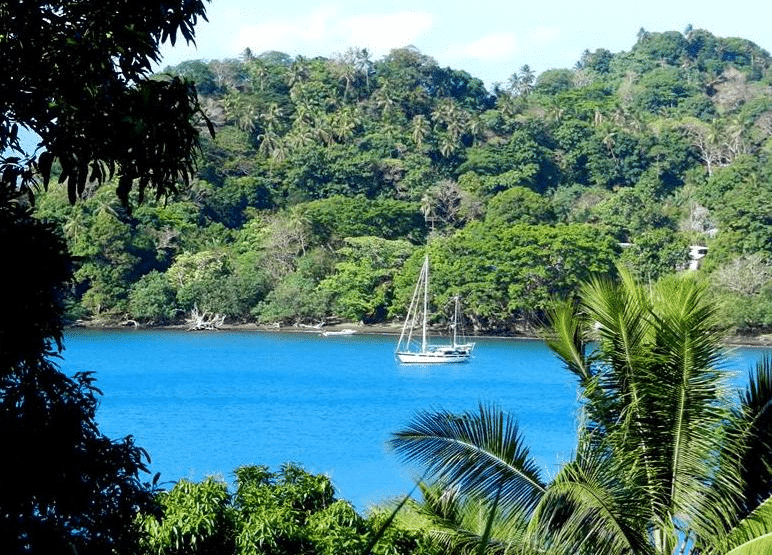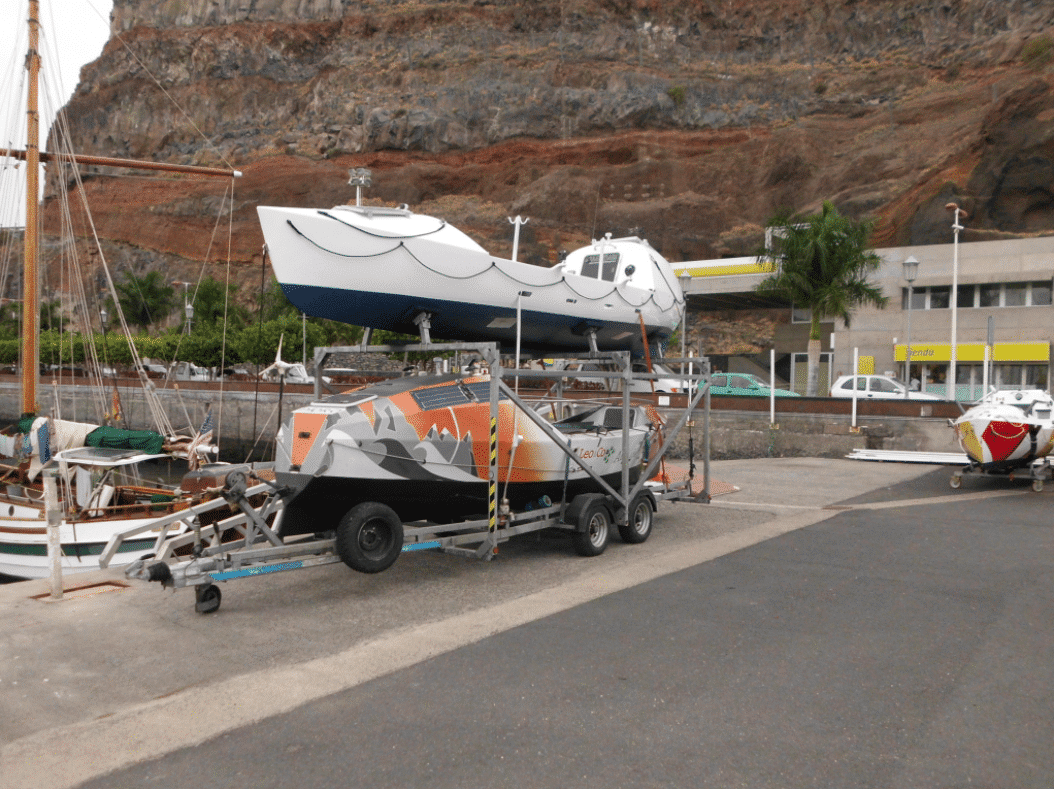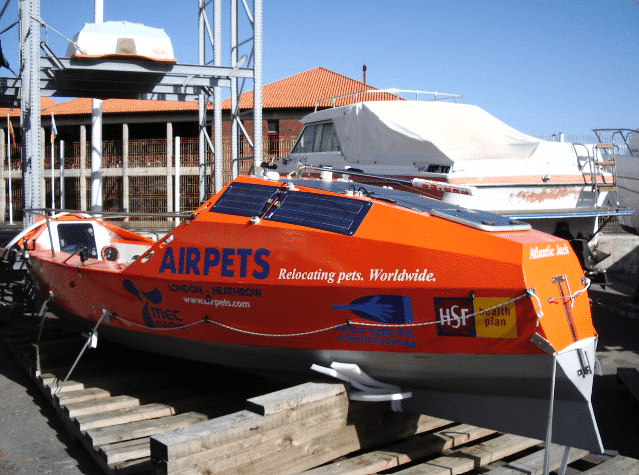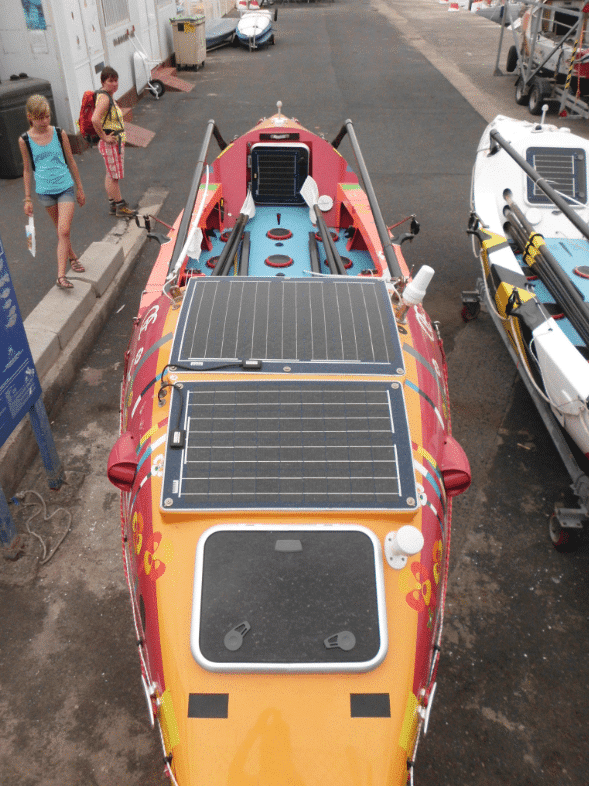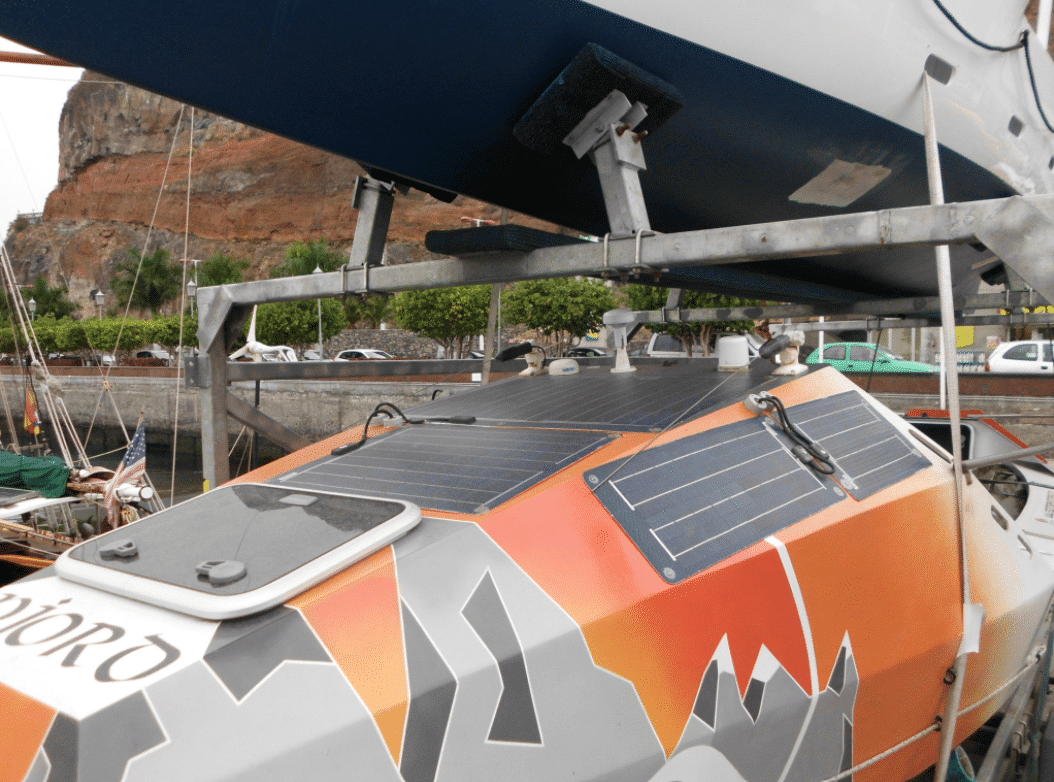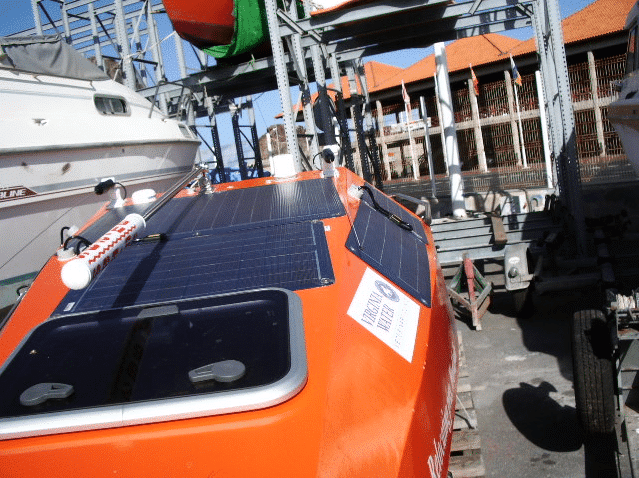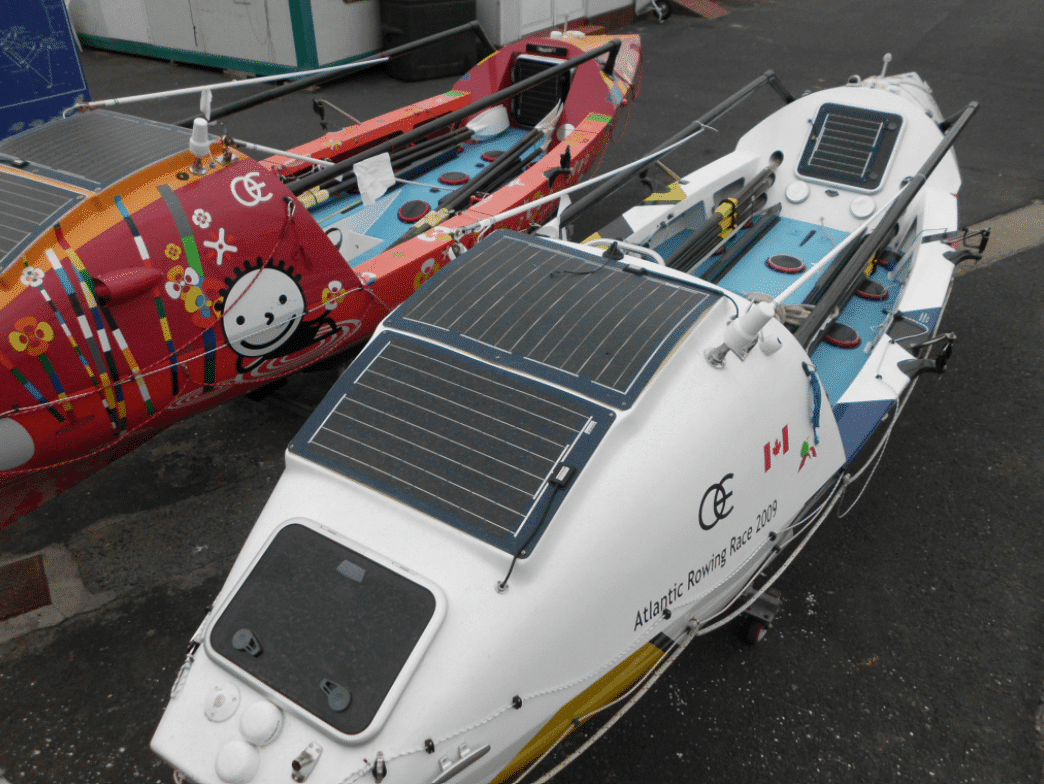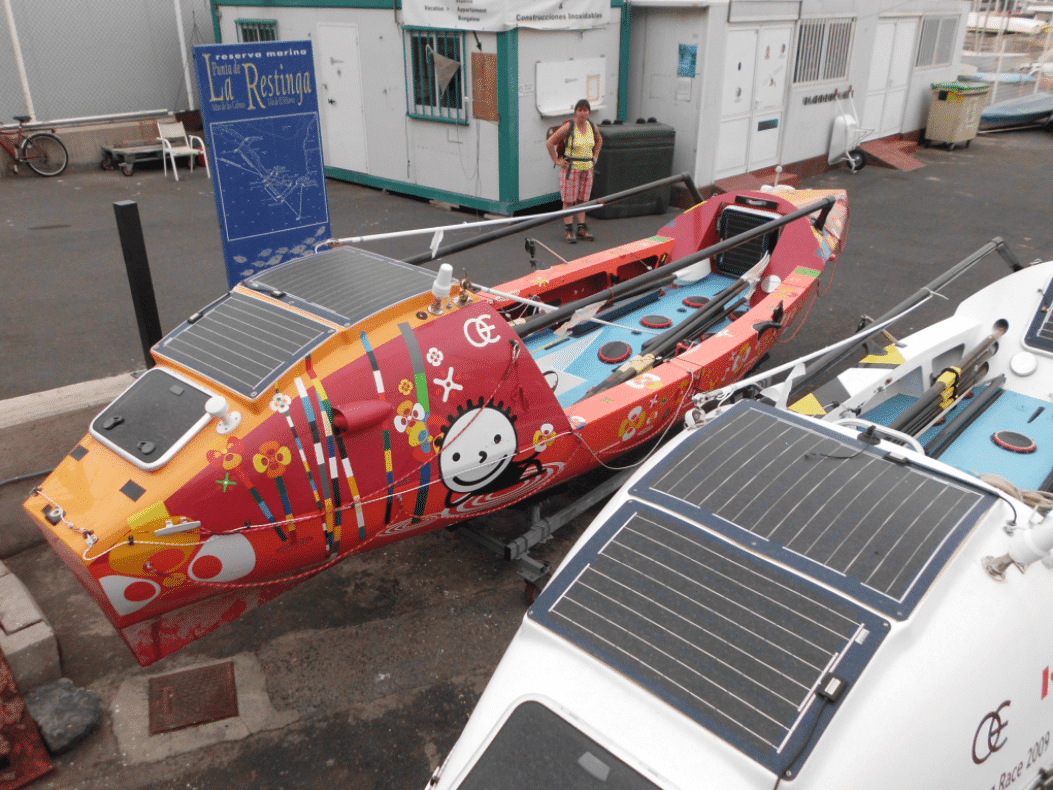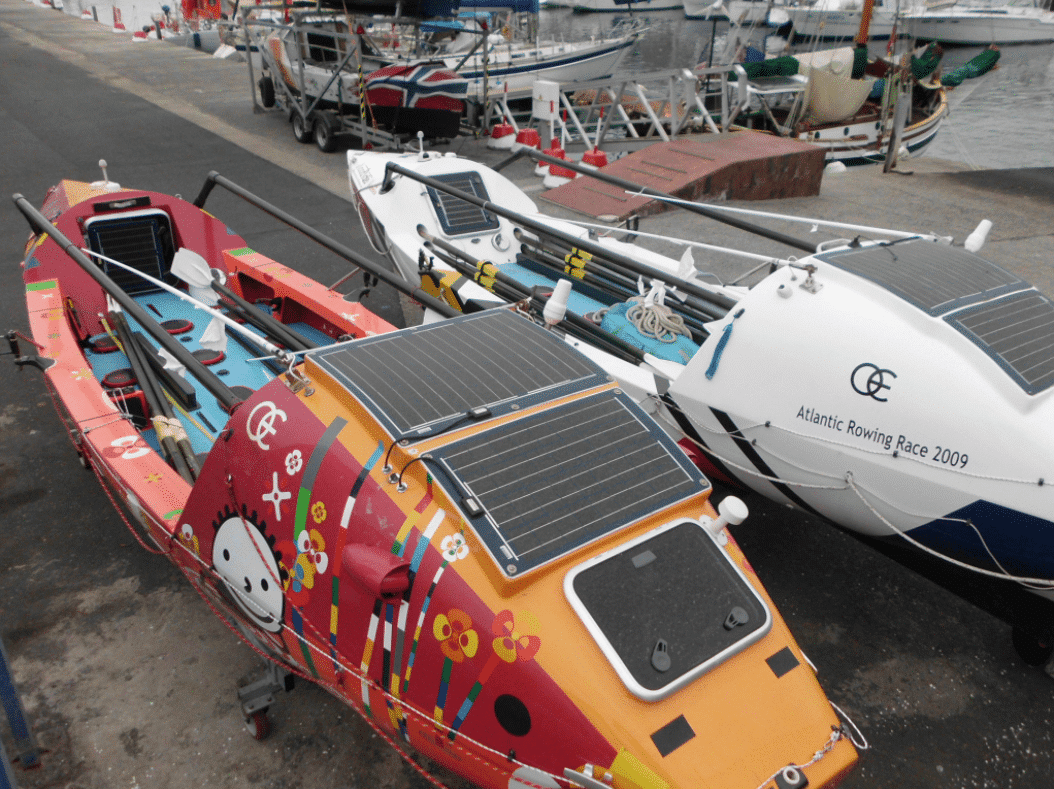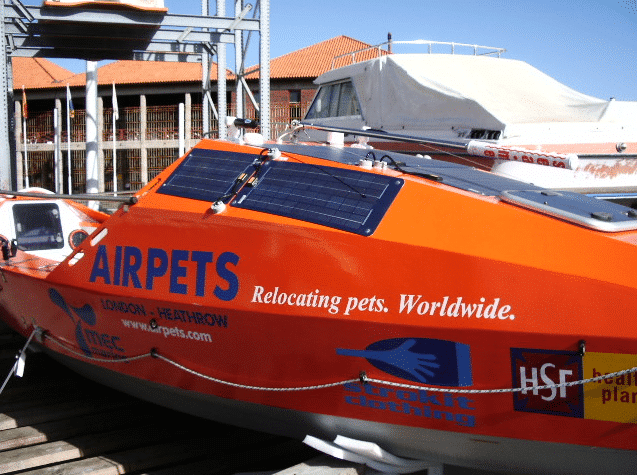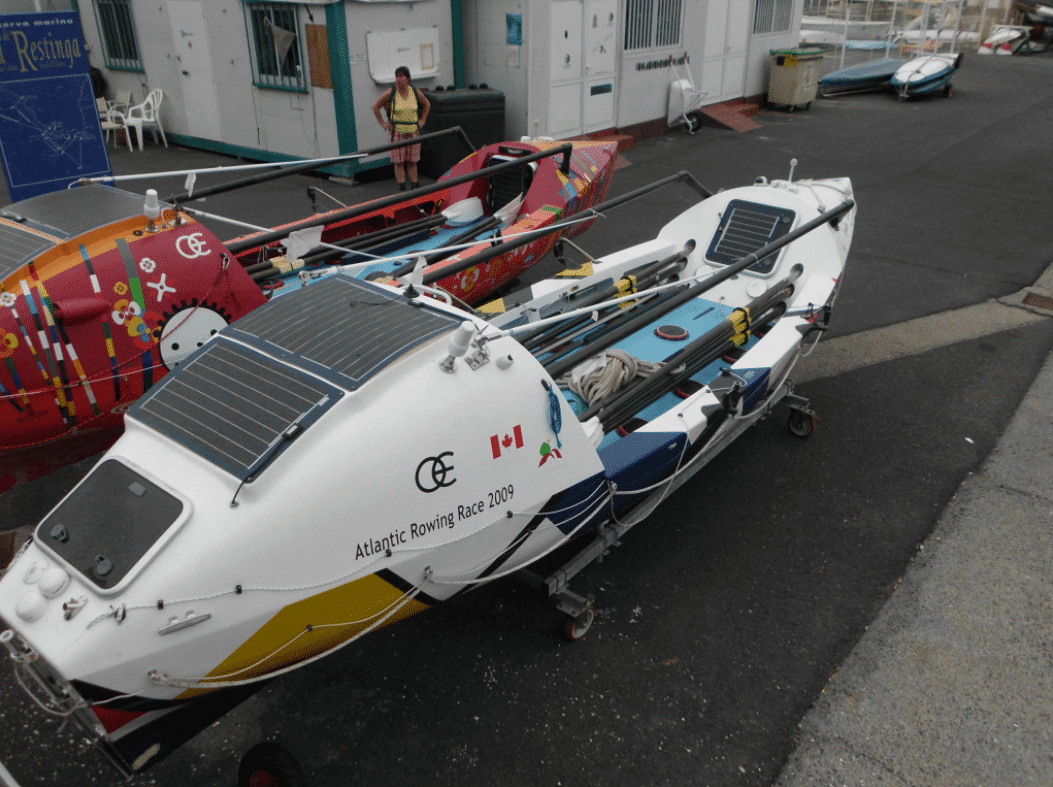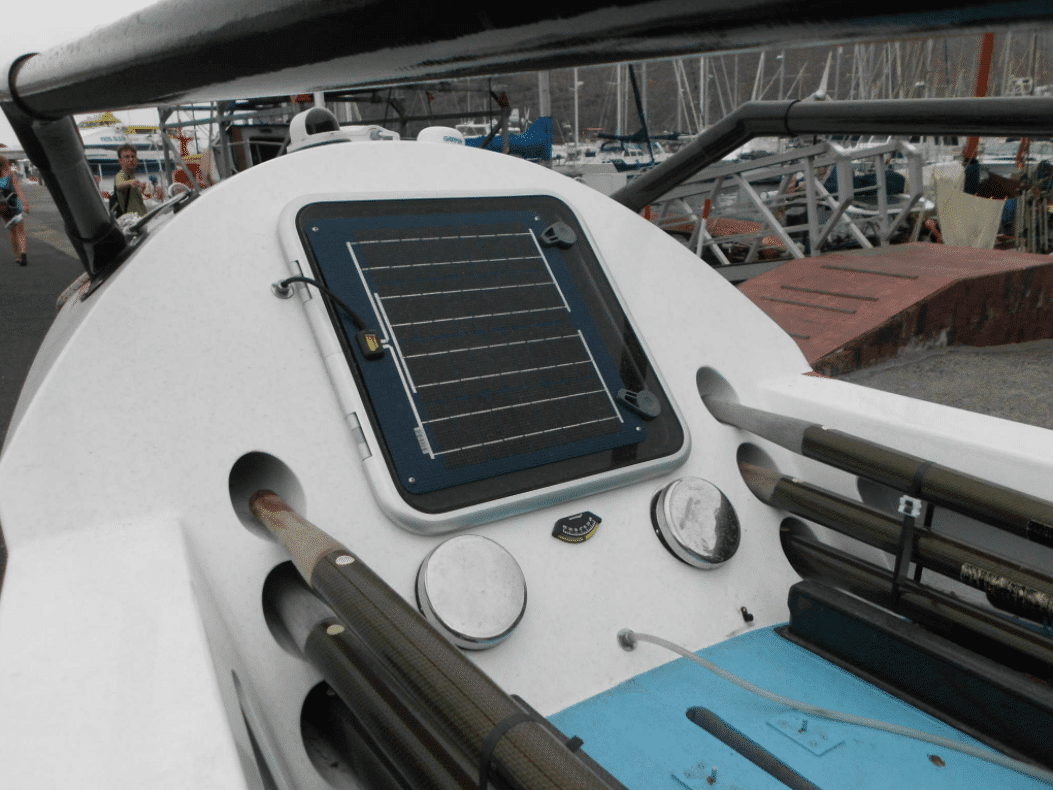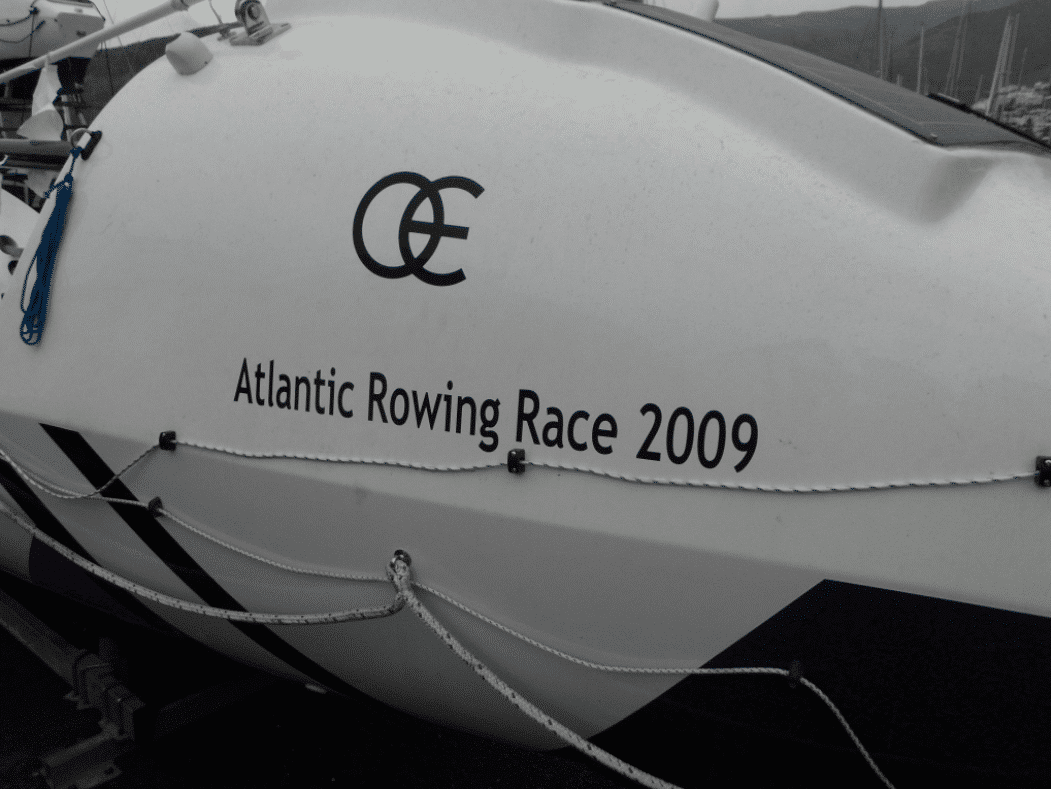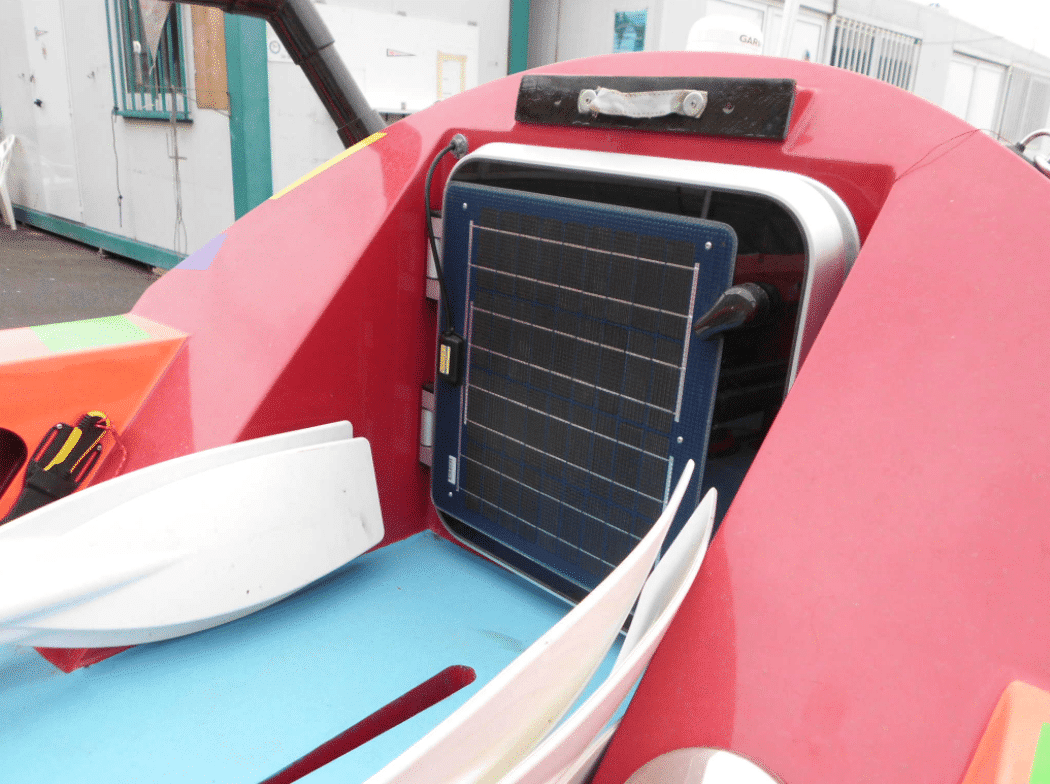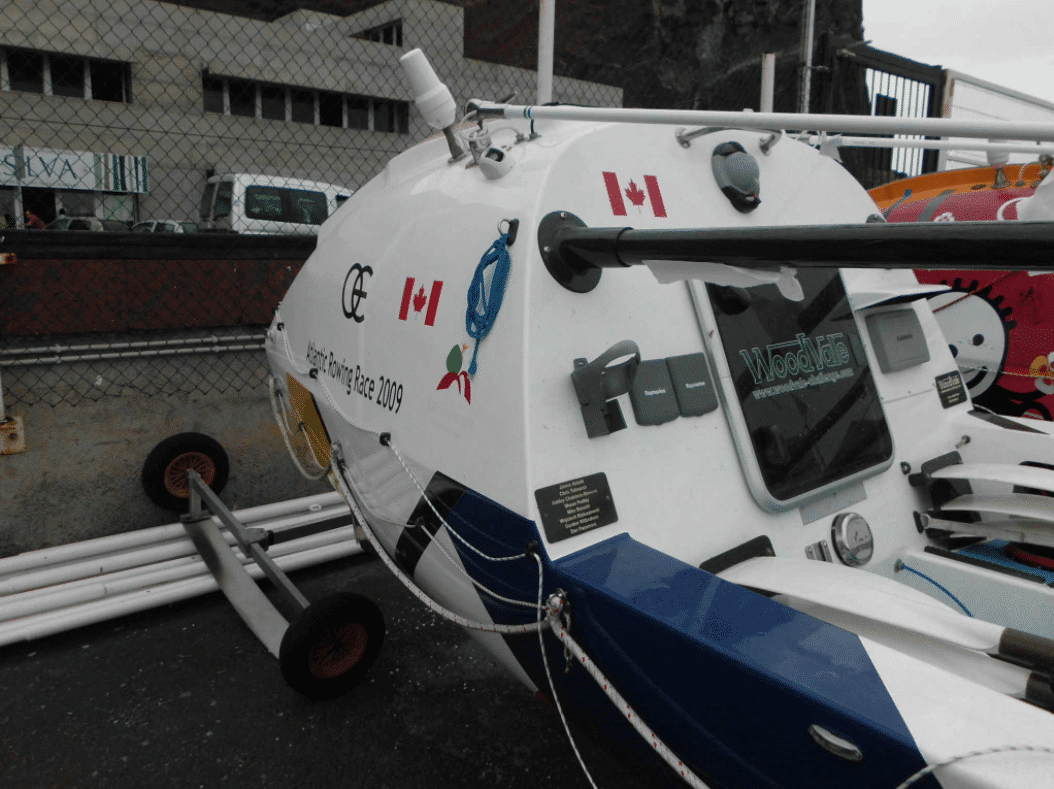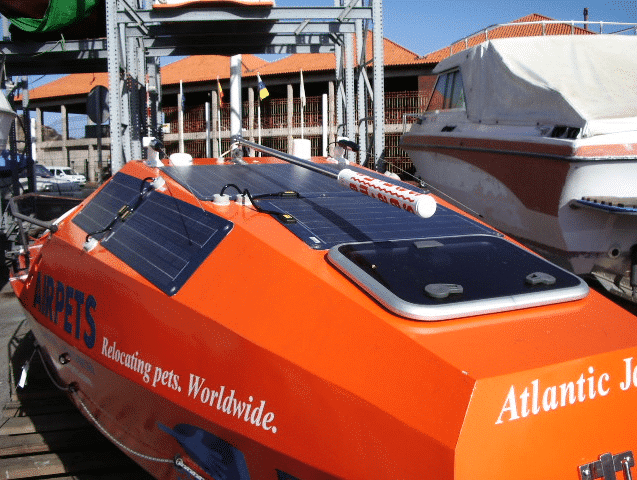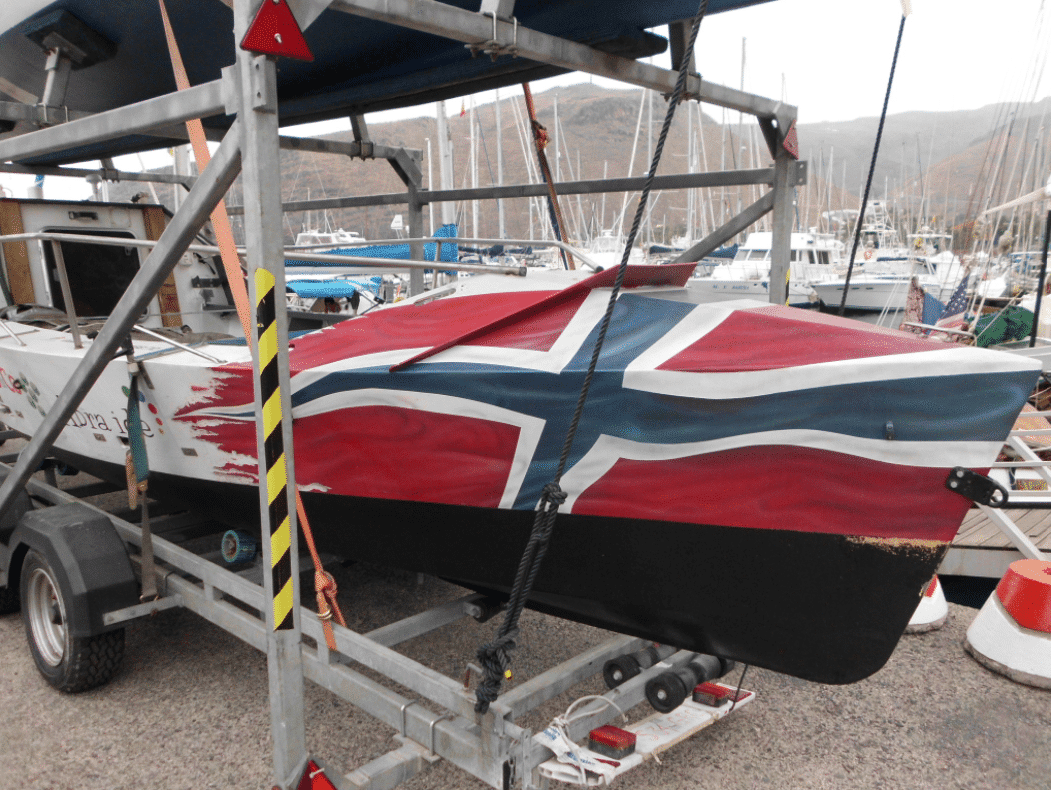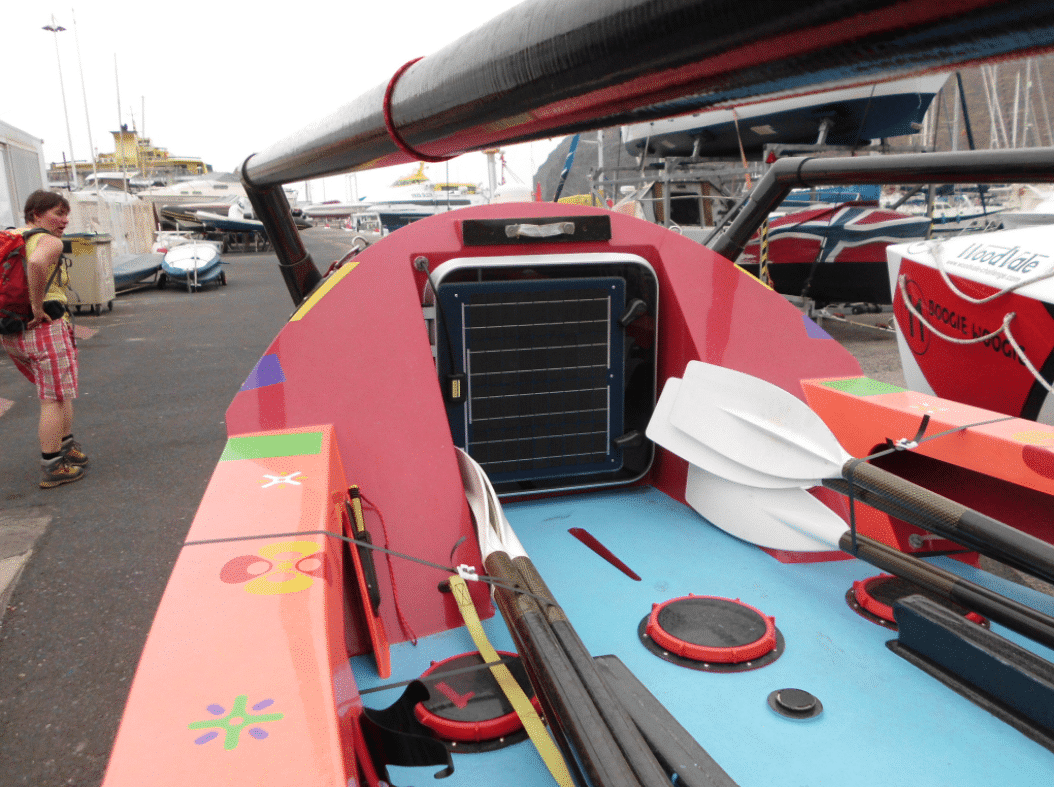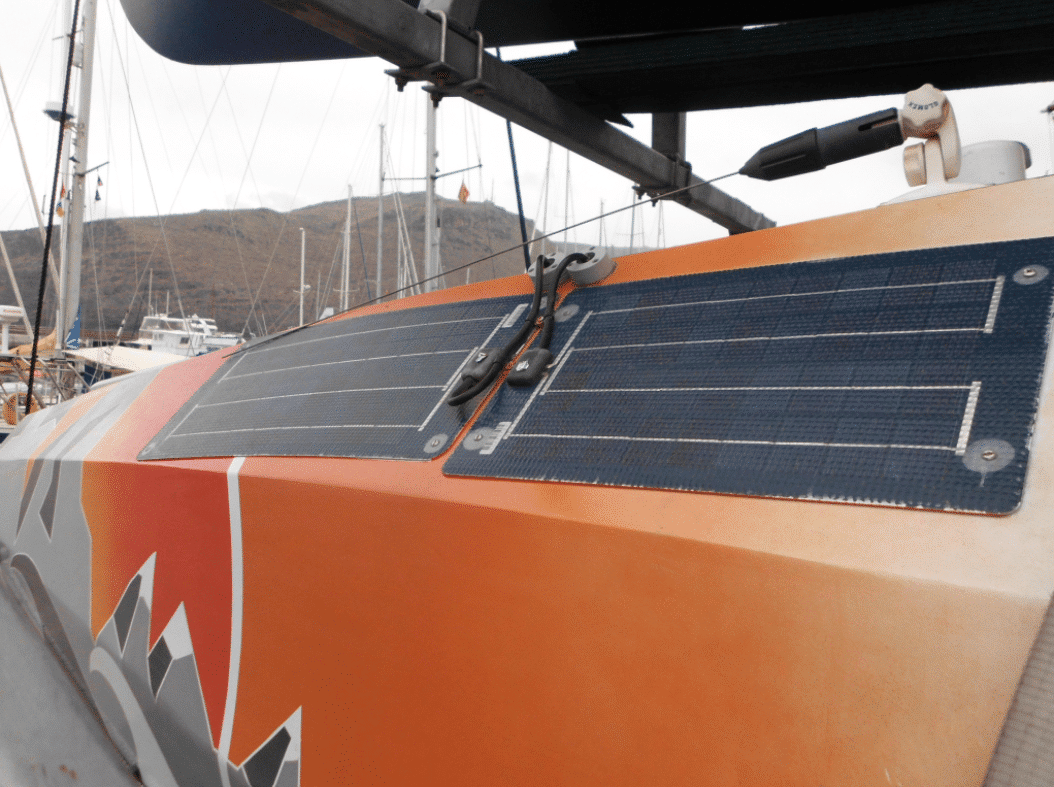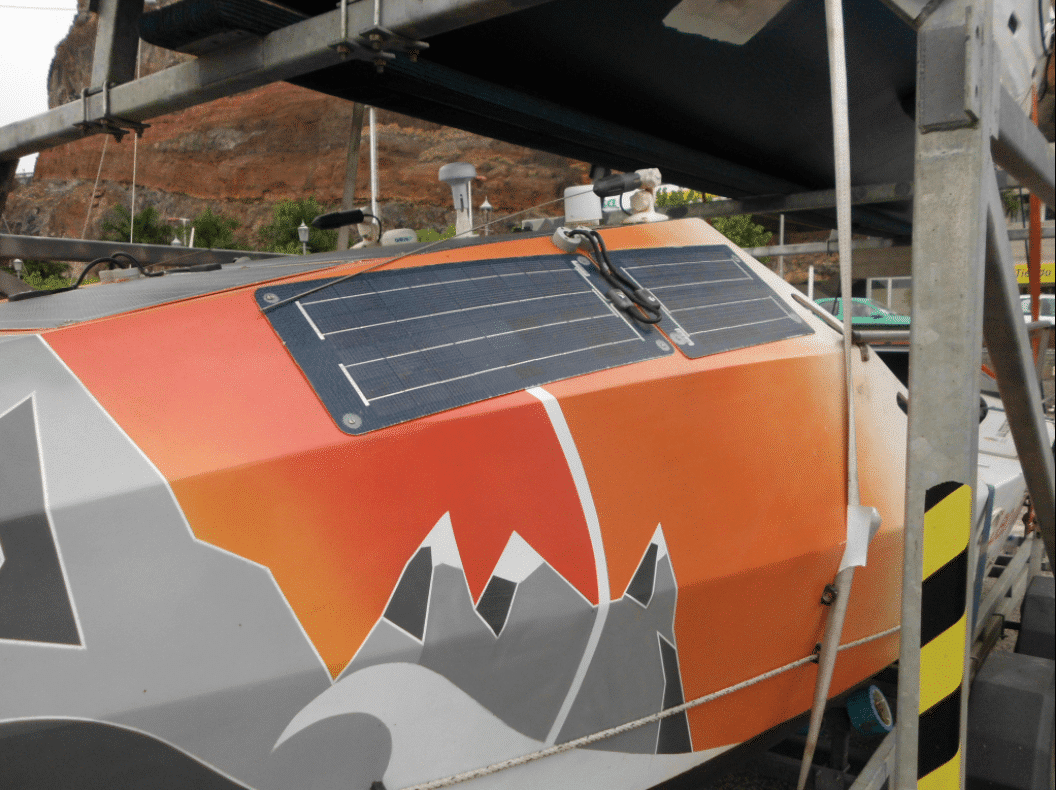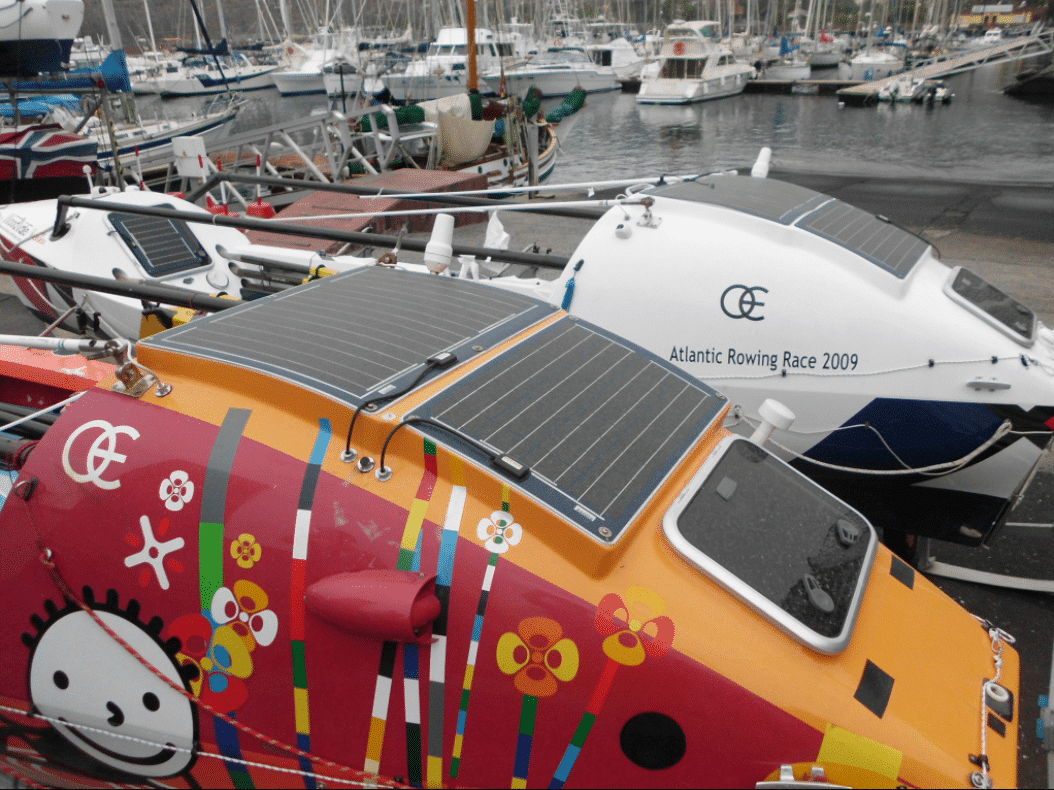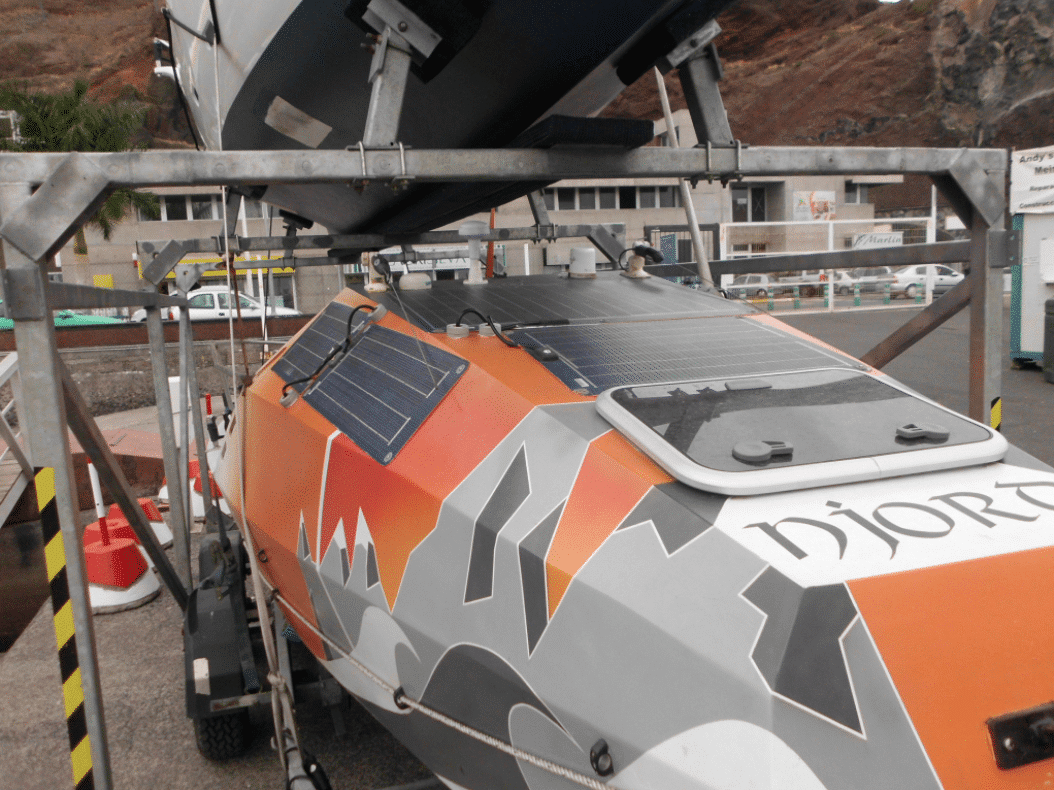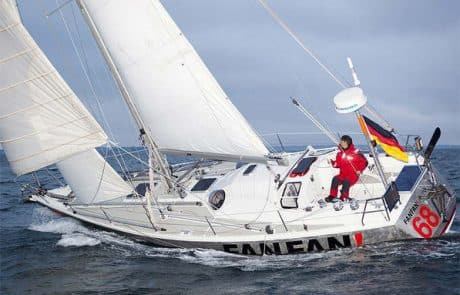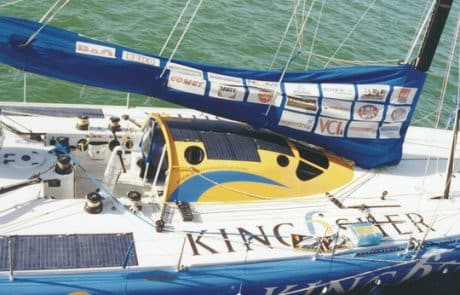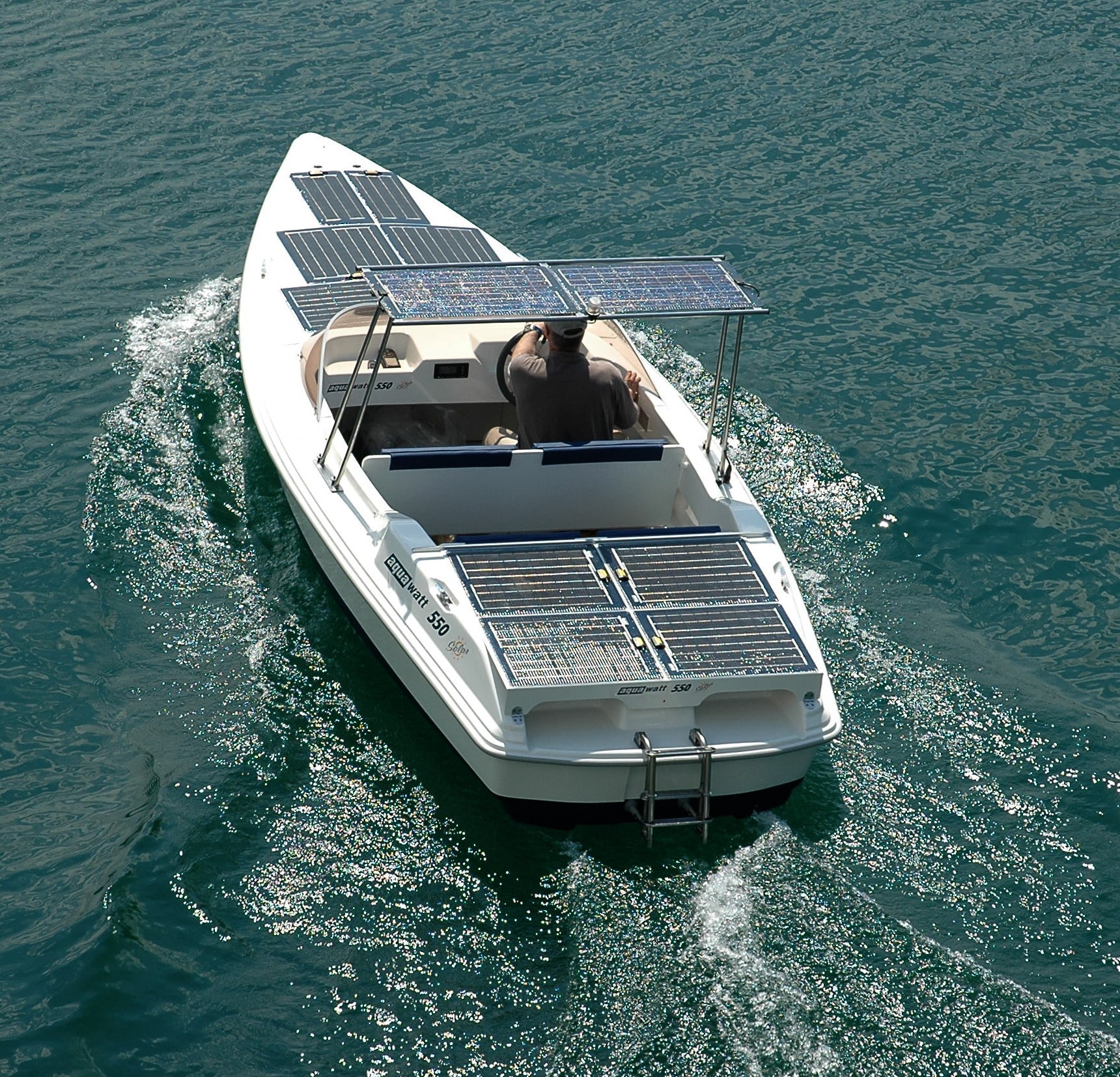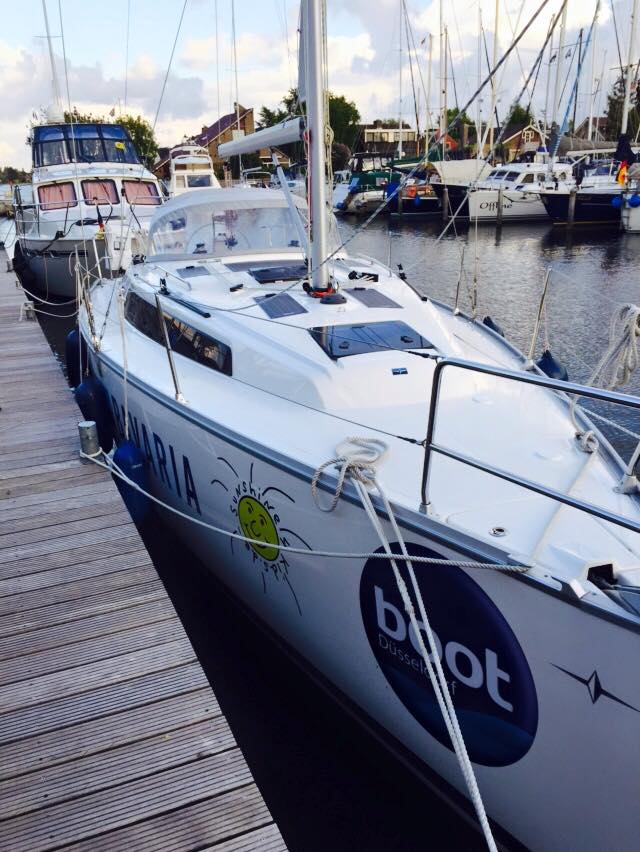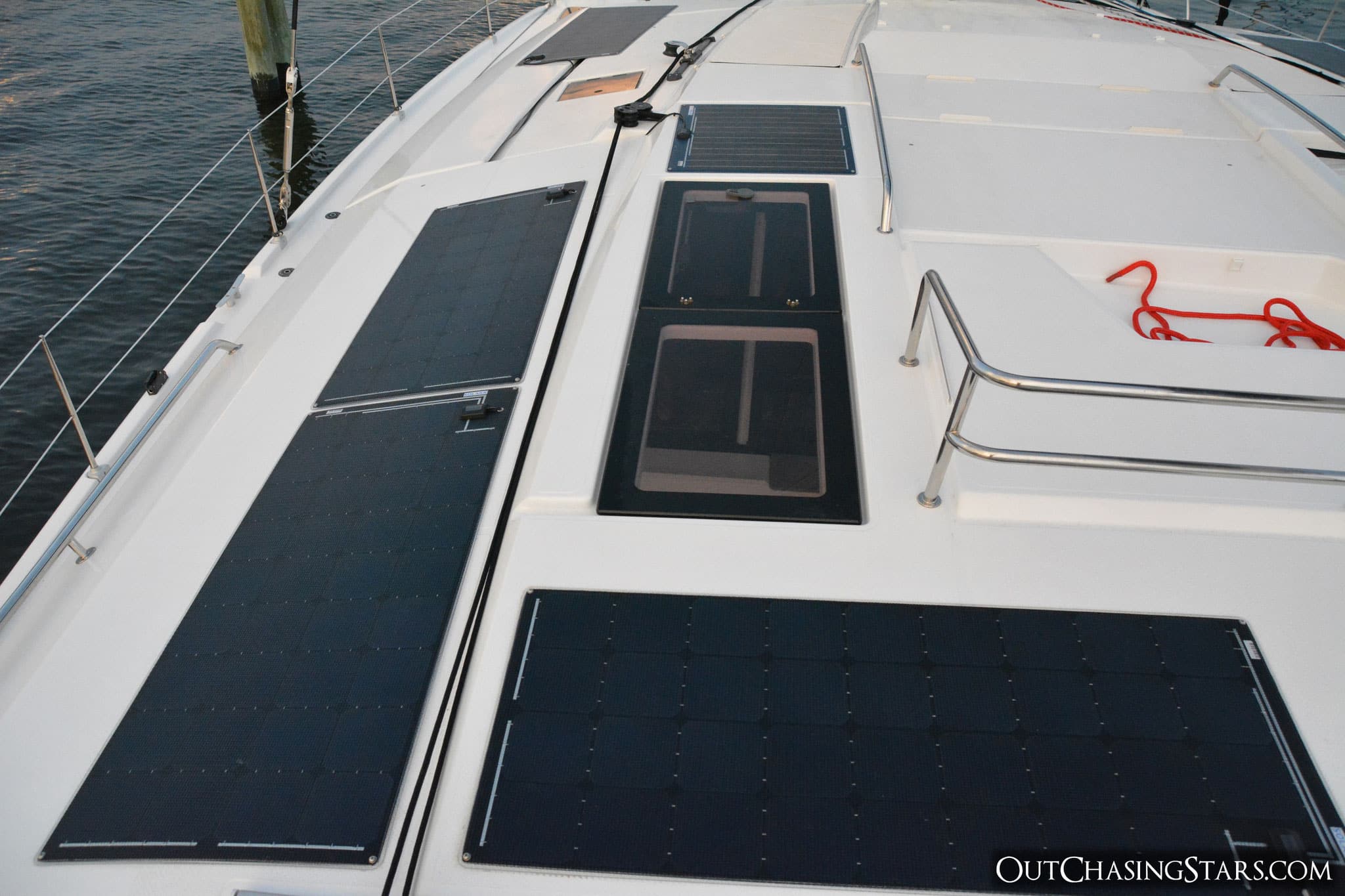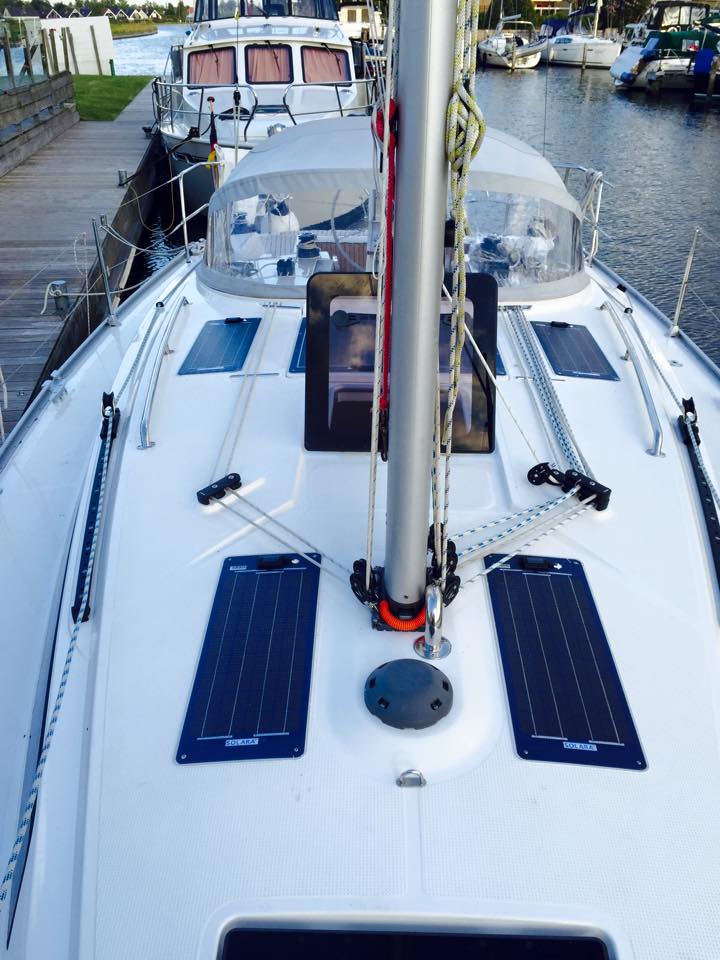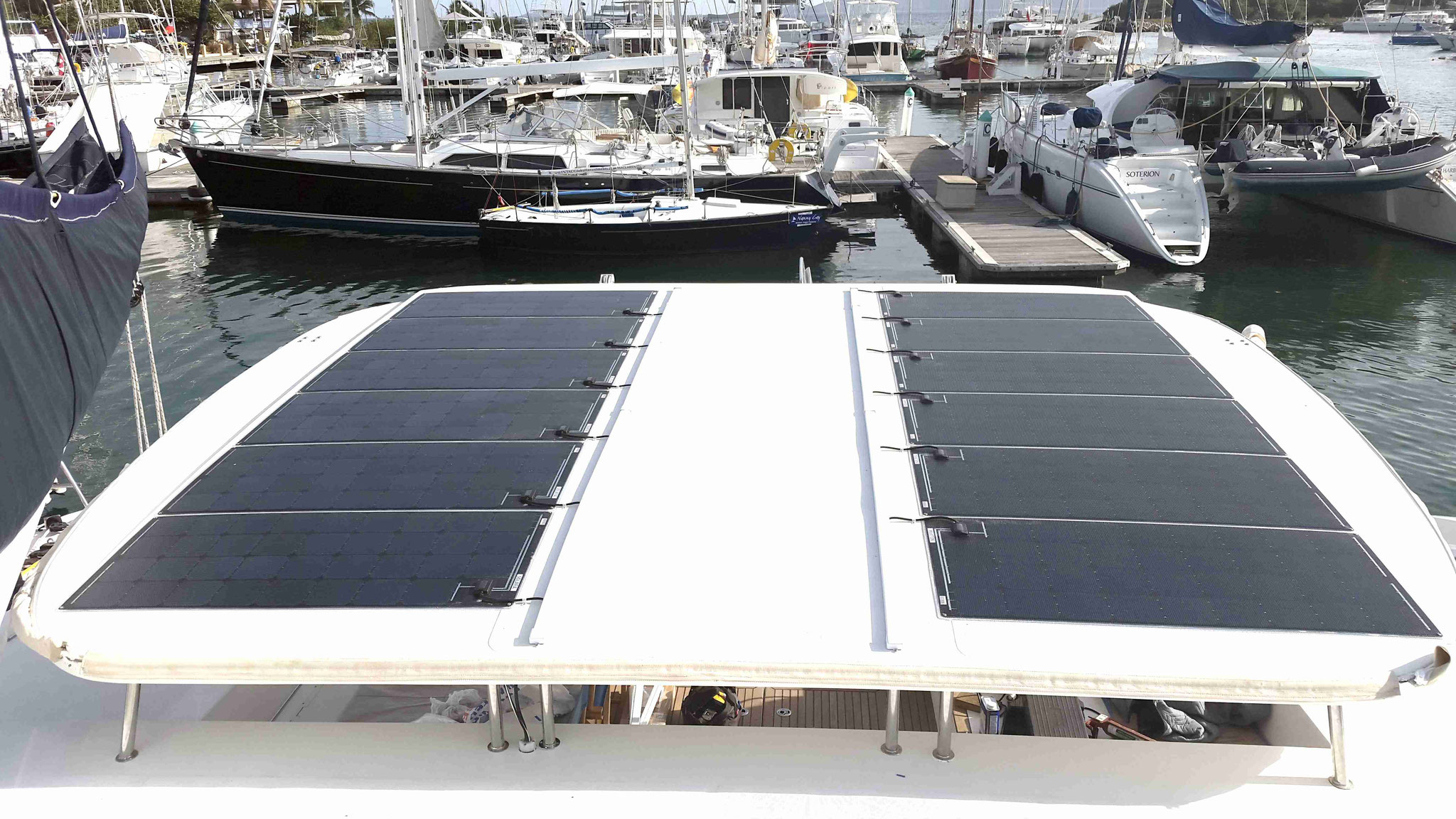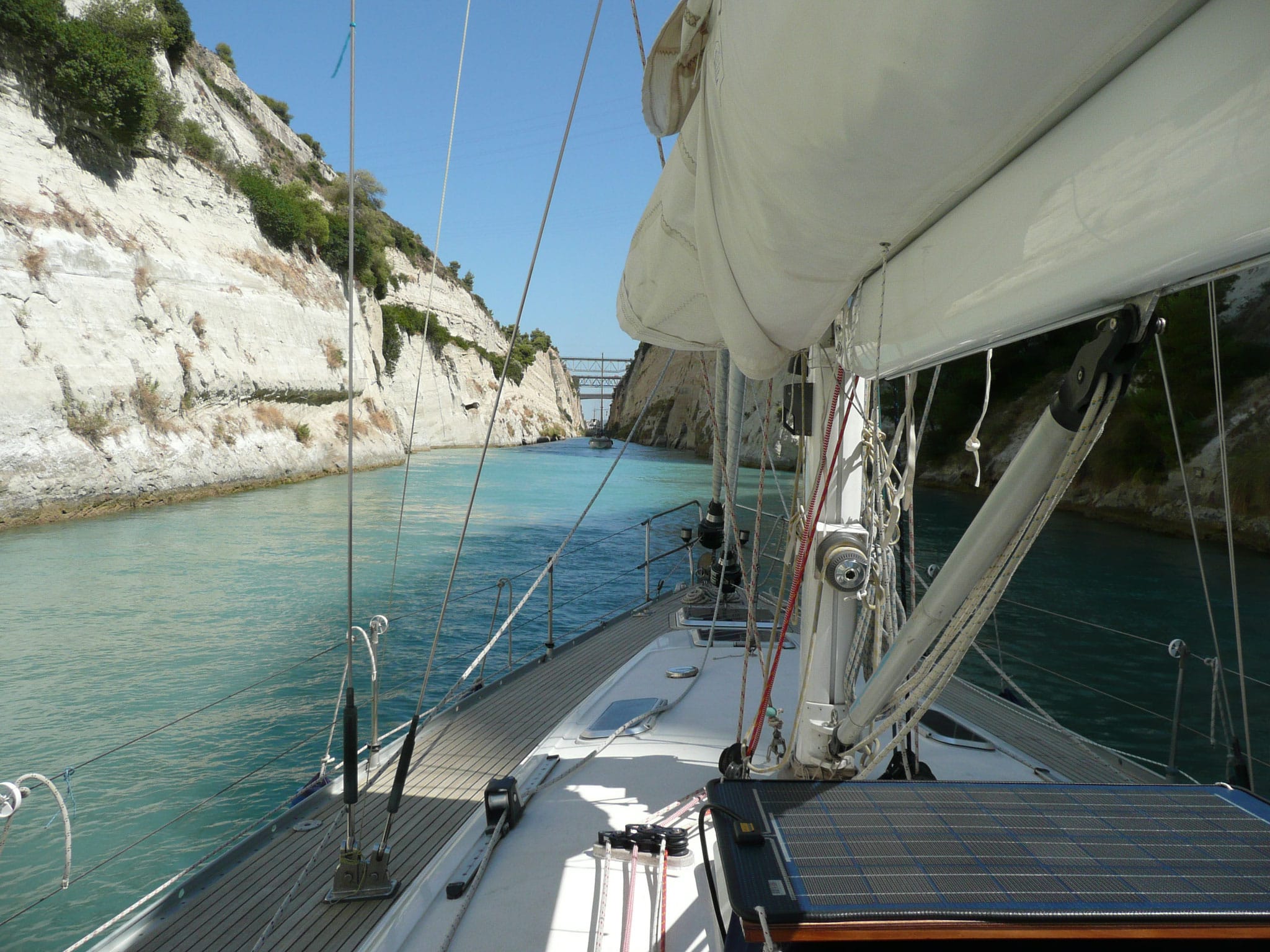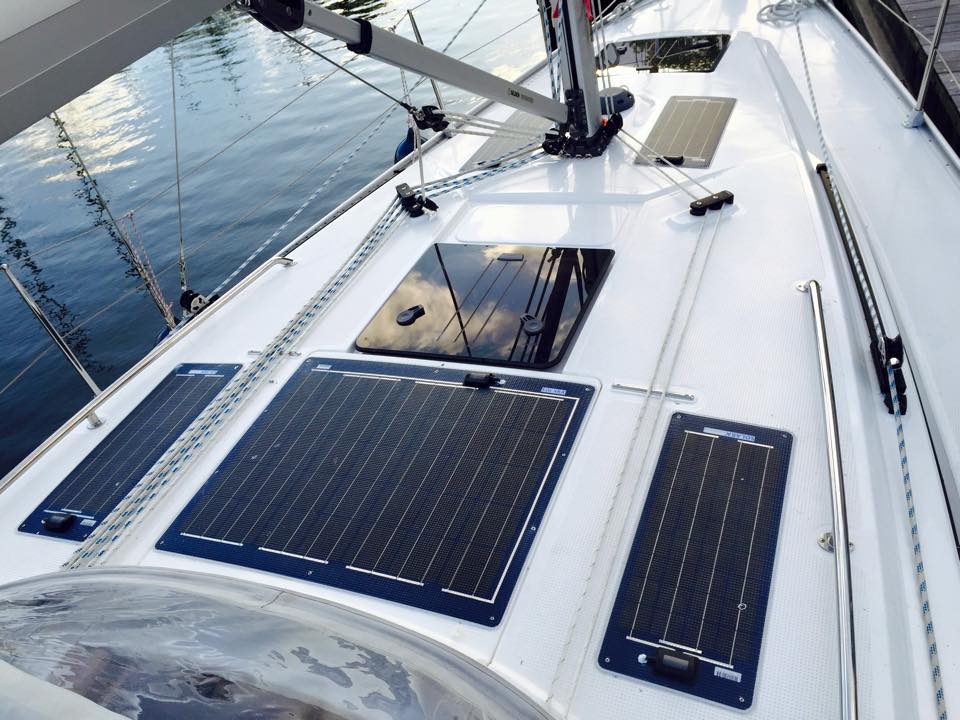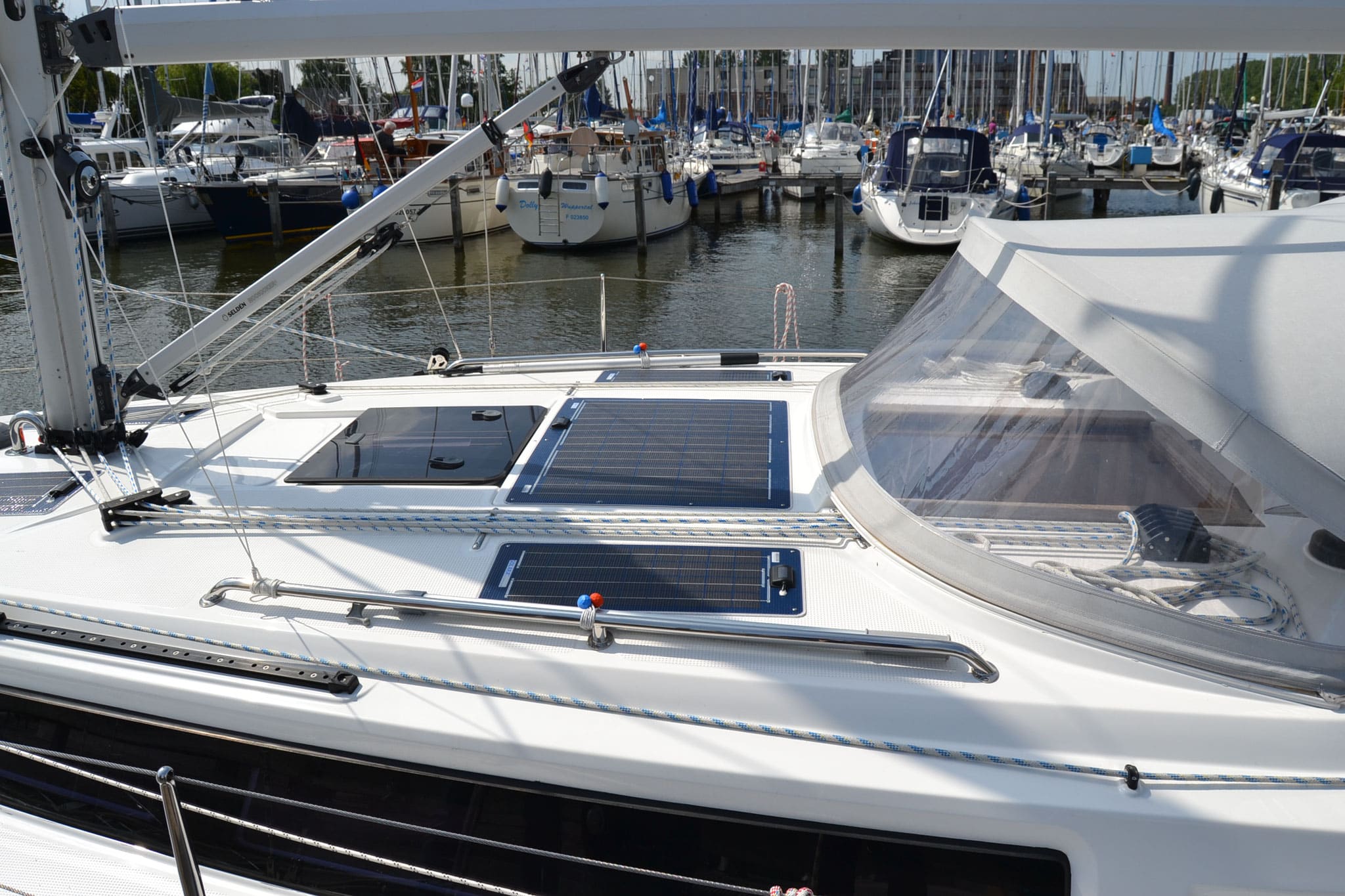Independent with solar power from SOLARA
Solar energy for boats and yachts
Electricity without grid connection thanks to SOLARA
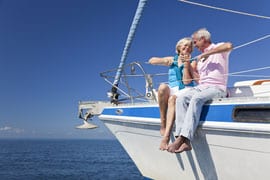
Anyone travelling on his sailboat or his boat is often without access to on-shore supply to cover its electricity for days. Exactly for these carefree leisure days at sea or in silent, in bays distant from civilization, we have developed our SOLARA solar modules Type M-series for sailboats and boats.
For all SOLARA photovoltaic systems there are suitable charge controller and display. Convince yourself of the benefits of flat solar modules of Marine (M) series. They are designed for navigation, are extremely flat, accessible and flexible.
With our SOLARA-modules for your sailboats and boats you get
- high quality of service before and after purchase
- best material quality and processing
- High current income through additional individual cells and the best low light performance (even in diffuse light)
- long time warranty
- Additional equipment in high quality from premium brands
Important information about modules, charge controllers, mounting systems, inverters or complete systems can be found on this website.
Alone across the Atlantic – reliable solar power with solar modules from SOLARA
A report by Marc Eric Siewert
If you want to sail alone across the Atlantic with a boat that is only 6.50 m long, you need reliability (including the solar system), 100% confidence in yourself and your equipment.
This is what we, the Absolute Sailing Team, have been looking for since the start of our campaign in the Classemini on a Minitransat650 prototype. That means using high quality (solar) products and always keeping an eye on the cost/benefit factor (of the solar panels).
Originally, SOLARA solar panels of the type SM160M with the serial numbers 191737 and 218924 (from the production year 2005) and 45W each were mounted on our boat. These older generation solar panels have lower performance than panels from current production but still, work flawlessly.
After the first part of the journey from Les Sables d’Olonne to Santa Cruz de La Palma, we had to realise: Our energy management was not suitable to provide enough solar power for the situations of a solo transatlantic regatta. The solar panels were too small to cover the energy demand, especially for the autopilot. Therefore, we asked SOLARA for support with the latest solar technology.
At short notice, two more modern and significantly more powerful panels (solar modules) of the type M-Series S320P41 Marine, each with 80W, were sent to La Palma.
On the second stage from Santa Cruz de La Palma to Saint Francoise on Guadeloupe, the new panels (solar modules) always provided full lithium batteries during the day and only had to be supported by our backup energy source – a hydro generator – about every third night. Problem solved!!! Because without energy, there are no assistance and safety systems and above all no autopilot with solar power, and without these systems, a solo Atlantic crossing is impossible.
We are convinced by SOLARA’s solar modules not only because of their high performance but also because of their high-quality, durable and very stable workmanship with an ultralow weight. In particular, the first-class surface coating of the solar cells and the aluminium carrier plate (Made in Germany!). These two aspects distinguish SOLARA solar panels from other panels on the market for recreational boating and offshore sailing.
A big thank you to SOLARA for this quick and uncomplicated support! Without your help, the Atlantic crossing would have been quite a bit darker.
Note: The previous 45W SOLARA modules will in future generate electricity on the roof of the Mercedes Sprinter of the Absolute Sailing Team!
Many greetings,
Marc Eric Siewert
More info: https://www.absolutesailingteam.com/
Around the world with the sailing boat Insieme and SOLARA modules
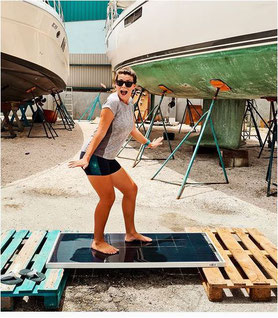
Julia L. on Curacao with her new SOLARA solar panel Vision for her sailing boat. SOLARA Vision glass/glass solar modules are, as you can see, absolutely robust and are lots of fun!
Julia L.:
“Yesterday our new solar panels arrived 
We already had two of these panels for a year, now we are adding another two. In total we will have 640 watts of solar power and our Insieme will be a lot more self-sufficient. 
SOLARA of Germany is Official Supplier for the HJ Sailing campaign – Golden Globe Race 2022
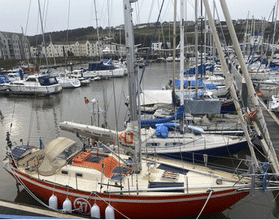
We’re pleased to announce that SOLARA of Germany have become our latest confirmed Official Supplier for the HJ Sailing campaign.
“I’m really delighted to have the SOLARA team join our Golden Globe Race project, it’s another great step for our campaign and will provide us with some incredible Solar panels for Puffin’s new electrical system” reveals Ian.
For over 25 years SOLARA has been developing off-grid solar systems. SOLARA panels are used for various projects including the roofs of mobile and holiday homes, in parking ticket machines as well as racing and cruising yachts.
The stand-alone systems also help to power remote villages and houses in emerging or developing countries. The Golden Globe Race is the ultimate off-grid event, sailing non-stop around the world Ian will be alone at sea for up to 9 months, so the kit which SOLARA will be providing is going to be critical to keeping Ian’s communications and safety systems running during the race.
“We’ll be using SOLARA M Power Series flexible panels, with four fixed units on the deck and one mobile unit, which will give us up to 430W of power generation, at least during most sunny days of the race” Ian explains.
Electric drive with solar power through solar panels from SOLARA on the motor yacht Rapsody 29′
The distinctive feature is the solar roof with solar modules from SOLARA. Specifically made for the motor yacht Rapsody 29`. Aluminium rectangular profiles were mounted in a slightly curved shape in the longitudinal and transverse direction. Eight solar modules of the SOLARA Power M-series (type S505M34) were glued onto these with Sikaflex. The total output of the solar system from SOLARA is approx. 880Wp.
“The testing in summer 2020 on the Fulda with the commissioning of all components was extremely successful,” says co-developer M. Meister.
The change from the combustion engine drives to electric drives, possibly with solar power, will become increasingly important for mobility in the future. The emission-free engine with no noise or exhaust fumes and with a solar power system will become increasingly important for boats as well.
The 4.5 t motor yacht with a diesel drive was retrofitted with an electric motor and a solar power system. The Li-ion battery (32 kWh) stores the solar power. The SOLARA solar system provides the necessary energy for the engine and other aggregates. Recharging can also be done in port or an emergency via an emergency generator on board.
The motor yacht Rapsody 29′ is a joint project of the Fraunhofer Institute for Energy Economics and Energy System Technology Institute, Kassel, the Competence Centre for Decentralised Electrical Energy Supply Technology (KDEE) at the University of Kassel and the Volkswagenwerk Kassel, Baunatal, which supplied the electric drive.
Independently with SOLARA panels
ANT ARCTIC LAB – one-handed and non-stop sailing around the world
The first attempt to circumnavigate the earth non-stop, one-handed and without help from outside – with electricity from SOLARA panels!
An incredible challenge for the sailor who has to show all his strength against storms, drift ice, loneliness and frustration.
Only materials of absolutely mature developments and technologies are used. This guarantees the greatest possible security, quality, functionality and sustainability. High-quality SOLARA solar modules and solar technology, from over 20 years of experience, make a significant contribution to achieving a new world record.
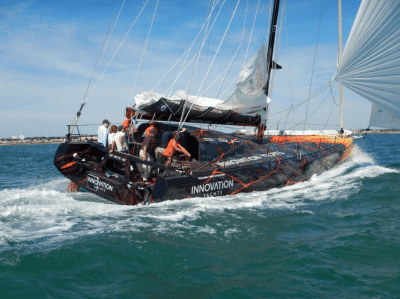 The OPEN60AAL ocean-going sailing yacht with a completely new yacht building concept. Equipped with pioneering solar technology from SOLARA. This guarantees a reliable power supply thanks to high-performance solar cells. A solar system for the toughest loads.
The OPEN60AAL ocean-going sailing yacht with a completely new yacht building concept. Equipped with pioneering solar technology from SOLARA. This guarantees a reliable power supply thanks to high-performance solar cells. A solar system for the toughest loads.
OPEN60AAL with a completely new yacht construction concept as well as robust and powerful solar technology from SOLARA.
The ANT ARCTIC LAB project represents the first attempt to circumnavigate the earth non-stop, one-handed and without help from outside via both pole routes and through all five oceans of our planet with electricity from SOLARA solar panels!
This offshore record attempt will start on July 21, 2019 and will take skipper Norbert Sedlacek Koch over 34,000 nautical miles, thanks to solar technology, through the most dangerous waters on our planet for around 7 months, through ice, hurricane storms and monster lakes.
ANT ARCTIC LAB not only embodies a unique record attempt with the support of solar panels! The OPEN60AAL also embodies a completely new yacht construction concept, which can withstand the toughest loads, such as a collision with floating ice, through the use of pioneering volcanic fibers. In addition, all materials used are fully recyclable!
Follow the entire project at www.ant-arctic-lab.com.
The solar system has a high output with eight solar modules of the SOLARA M series. This guarantees the charging of the batteries by the solar panels with powerful solar cells. The solar panels are simply stuck flat on the boat deck.
The seawater-resistant SOLARA M (marine) series of solar modules are simply glued flat and permanently onto the boat deck. This means that the solar modules are accessible. The Teflon-like surface is non-slip and dirt-repellent.
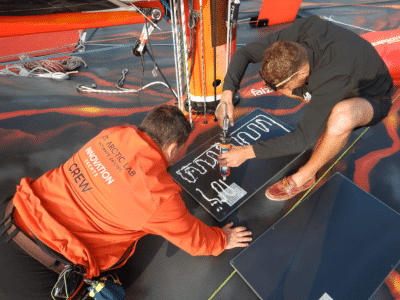 For SOLARA managing director Frank Heise, not only the use of the in-house products was an argument for the cooperation, but also the recycling concept for the yacht as a whole. “A real argument in terms of sustainability today,” says Frank Heise.
For SOLARA managing director Frank Heise, not only the use of the in-house products was an argument for the cooperation, but also the recycling concept for the yacht as a whole. “A real argument in terms of sustainability today,” says Frank Heise.
Solara solar panels have already won numerous awards on yachts and racing yachts. “It is always exciting to be part of such a challenge with solar technology from SOLARA. Again, it is demonstrated how our products assert themselves under these extreme conditions,” continued Heise.
Sophisticated on-board electronics will also record the yield data of the solar system, so that we can later incorporate real practical data into our system planning.
“Of course we wish the skipper and the yacht all the best and a successful project.”
This is how a solar power plant works
For independent, silent and reliable solar power on board of the sailboat
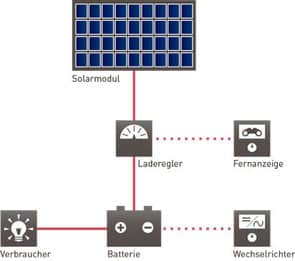
Summer means: Get out on the water and go sailing! – With SOLARA enjoy solar technical mobility at sea. The SOLARA Type M-Series is walkable, semi-flexible and specially designed for boats.
This is how a SOLARA – solar power plant for boats works:
For your sailboat you need as shown in the drawing:
- A SOLARA-module (e.g. M(Marine)-Series) for energy production
- Optionally a special adhesive set for bonding the solar modules securely with the deck
- A roof duct (item no. DD1 in white) for waterproof and permanent routing of the cable from the solar module to the charge controller
- A charge controller with LED-display for monitoring the battery and charge indicator and to protect the battery against overcharging and reverse currents
- A UV-resistant cable to connect the solar panel with the charge controller and the battery
In addition you need a battery and an inverter for 230V for grid connection, as long as they are not already on board.
In four steps to a solar system with SOLARA for your sailboat
Step 1: Surface analysis
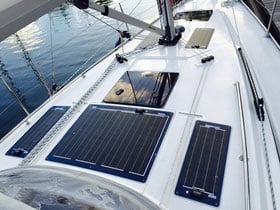 First, determine all areas that are available on your boat for the installation of the M-series. They should have a flat surface; it can be curved up to 3%. The M-series is available in different sizes, certainly also an appropriate size for your boat.
First, determine all areas that are available on your boat for the installation of the M-series. They should have a flat surface; it can be curved up to 3%. The M-series is available in different sizes, certainly also an appropriate size for your boat.
Should there be no space on deck; a standard solar module with frame and glass surface (e.g. the S-series) can be mounted onto a special support.
Step 2: Determination of your daily power requirements
| Device | Power Rating | Operating time | Consumption |
|---|---|---|---|
| Radio | 15 Watt | 4 hours | 60 Wh/d |
| Lamp | 10 Watt | 5 hours | 50 Wh/d |
For the daily requirement in our example, you need a solar panel with 27Wp (watt peak = maximum output) in the summer months.
If you have selected the right solar module, the specified nominal power (Wp) results in an approximate average daily yield (Wh/d) in summer. You simply compare this yield with your daily or weekly requirements. The result shows you how much of your daily electricity needs you can cover with your solar yield through the SOLARA-panels. Of course, the on-board battery must also be designed accordingly.
You can get a reliable guideline for your daily energy requirements if you use the individual consumption points on board, e.g. light, radio or refrigerator and multiply them by the respective operating time. The sum of these gives you your total daily requirement in watt hours per day.
Step 3: Selection of your SOLARA panels
Step 4: Choosing the right charge controller for your solar panels
Solar panels need a good charge controller so that the battery is not damaged by being overcharged or creating a reverse current.
Just multiply the nominal output of the solar panel and select the appropriate charge controller with the corresponding module output.
We recommend the MORNINGSTAR-CONTROLLER with epoxy resin encapsulated printed circuit board. The controllers are microprocessor-controlled, have an automatic switch for 12 or 24 volts and can also charge gel batteries! With a temperature sensor, a deep discharge protection, a regulated characteristic with PWM charging, electronic fuses and 5 years warranty, it is ideal for yachts.
For extra yields of 15 to 20% per day, we recommend the MORNINGSTAR MPPT CONTROLLER. Optimal for the M-series with more than 36 solar cells in the module.
With the rowing boat across the Atlantic
Special rowing boats before launching on La Gomera (Canary Islands, Spain) to cross the Atlantic. Rowing boat teams from different European countries have independently chosen solar modules and solar technology from SOLARA. The basis for the decision was the absolute reliability and robustness of the solar technology in any weather conditions. For over 20 years, professionals have been opting for solar technology from SOLARA.
Solar technology from SOLARA for every regatta and greatest challenges
Here a few nice examples
Solar technology from SOLARA has been around the world for 20 years – here a few nice examples:
You also have beautiful photos with solar technology from SOLARA?
Then simply send us your pictures with the solar panels. With your permission, we will gladly publish your “Solar Photos” here on our homepage. If you want it is also possible with your name, date and a few lines to the photos with the solar panels. Simply send us an e-mail and click here!

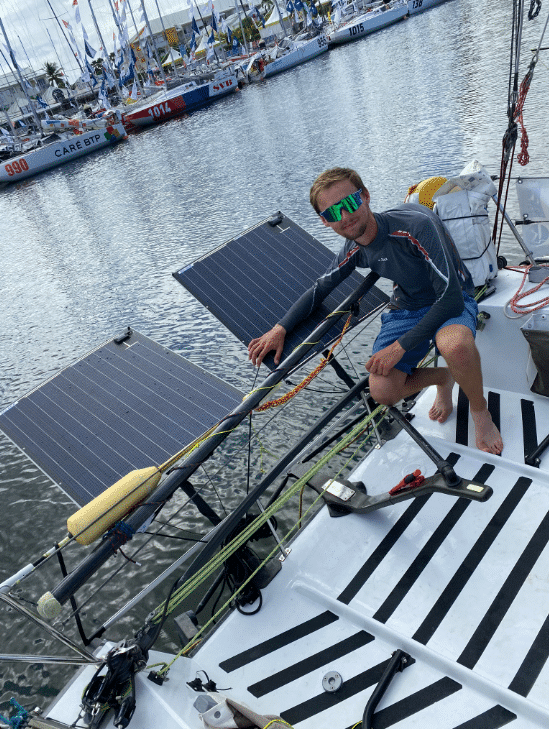
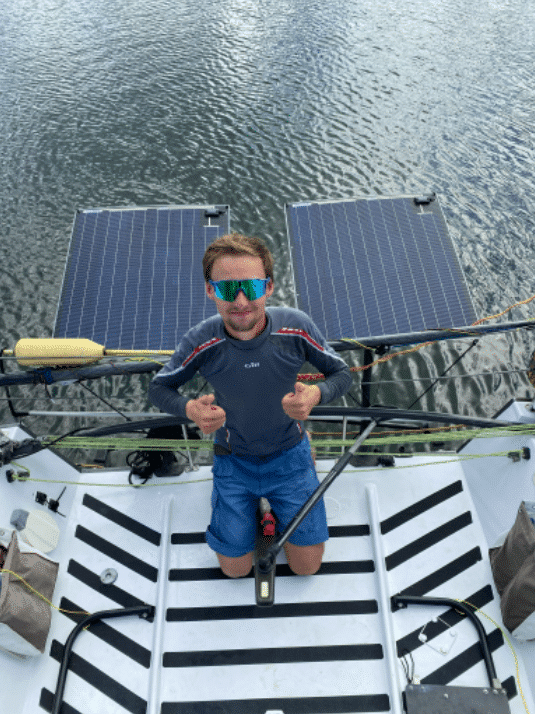
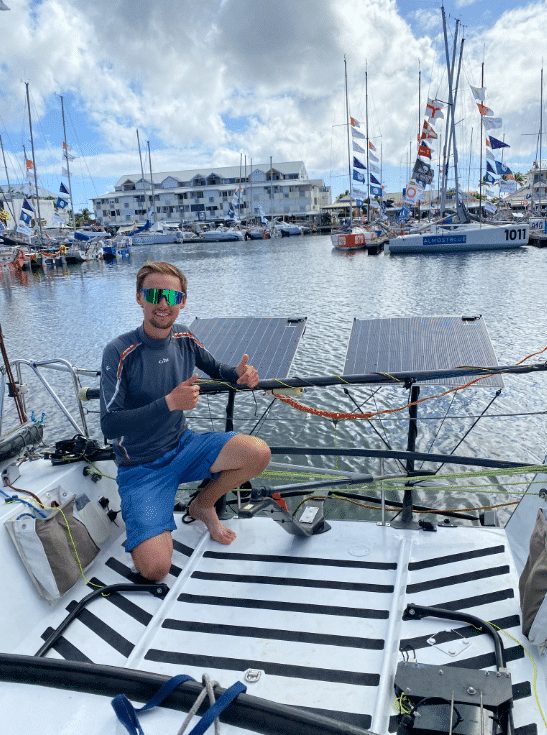

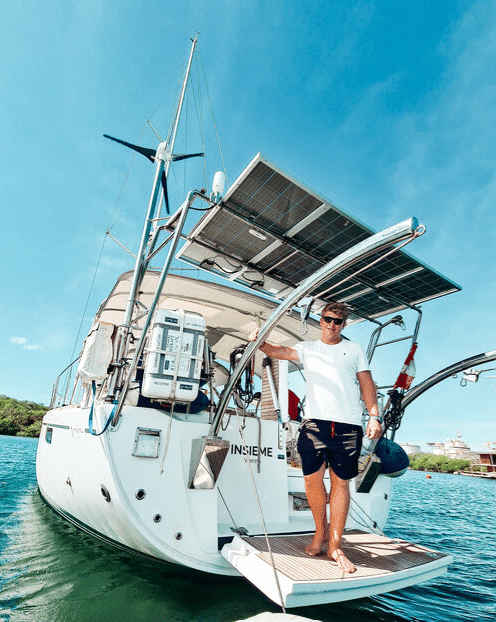
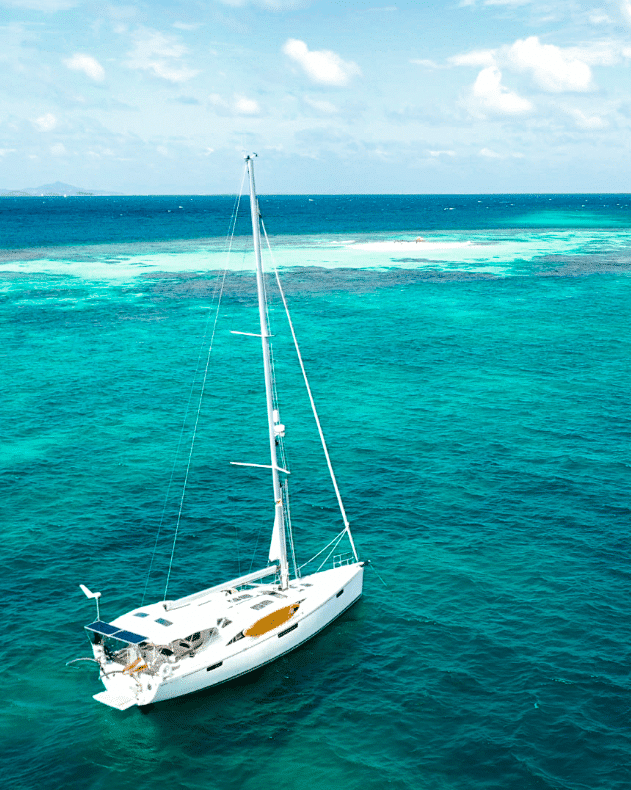
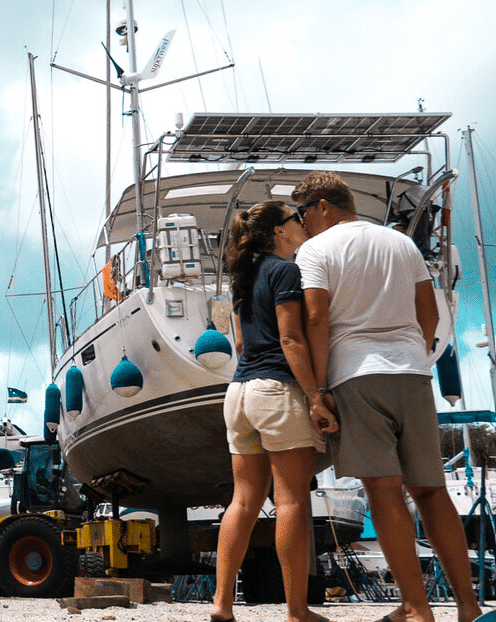
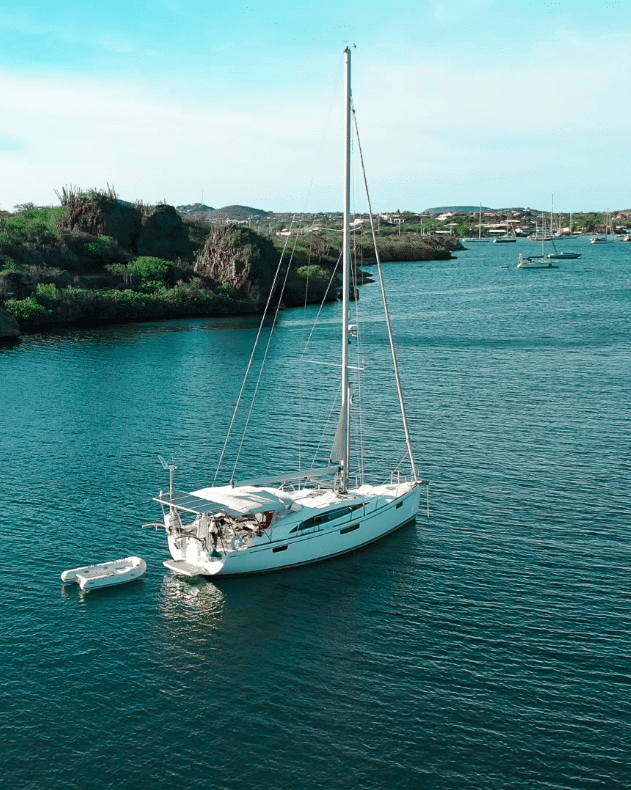
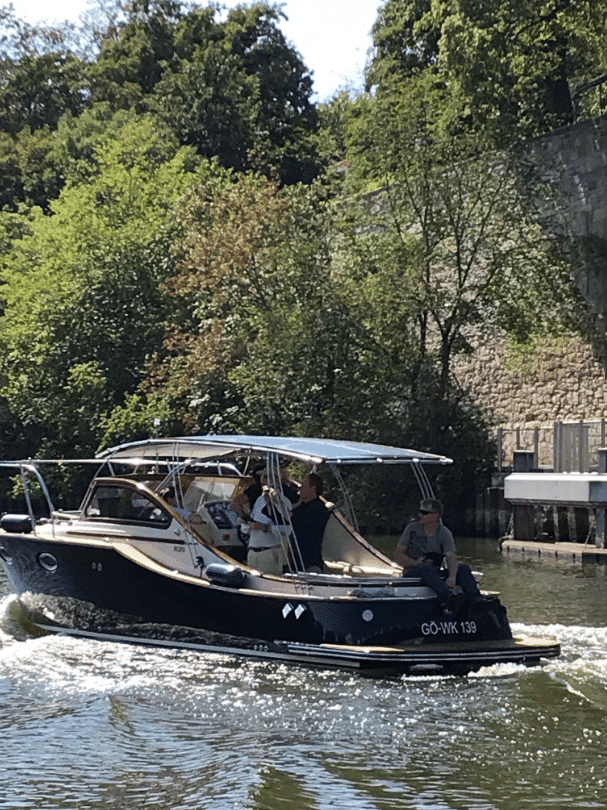
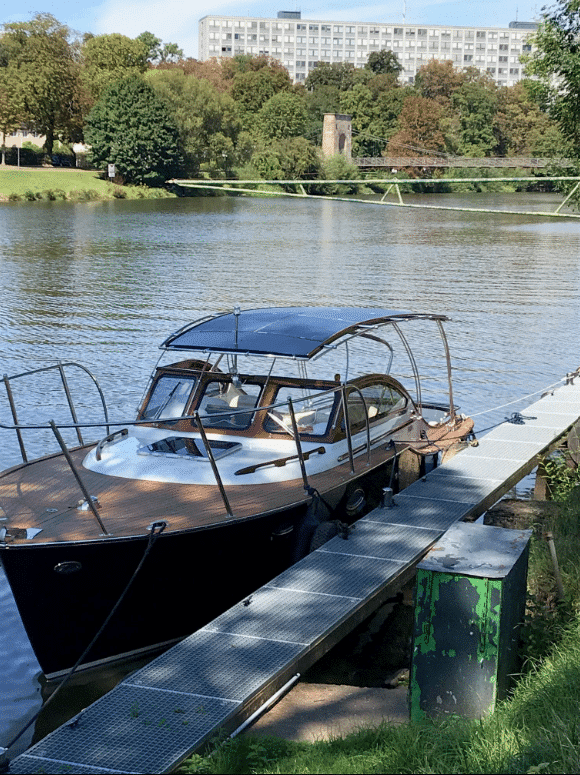
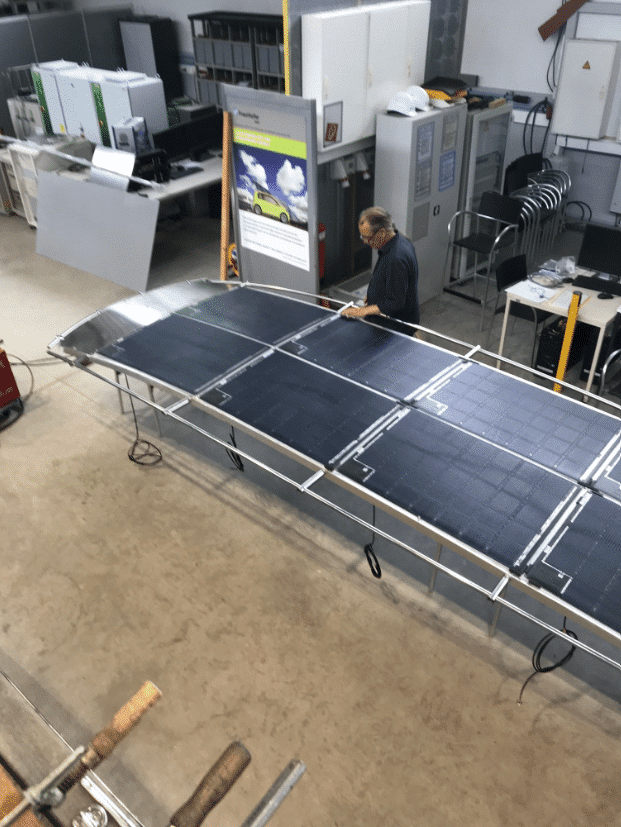
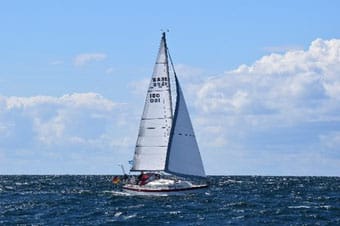 For many years now, our Solara SM160M has accompanied us on our adventures on the Baltic Sea.
For many years now, our Solara SM160M has accompanied us on our adventures on the Baltic Sea.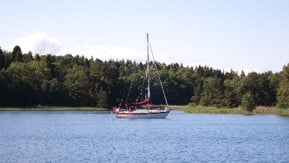
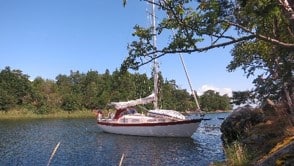
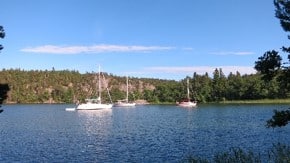
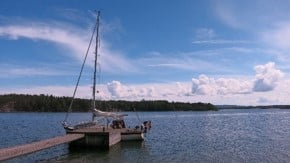
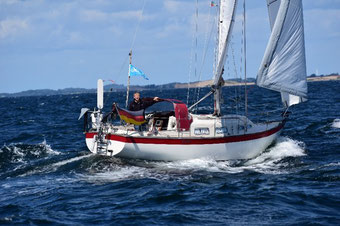 Solara solar power on the sailboat Krabbe by Marc L. reliable solar power with the Solara M series for over 20 years. Solar system and solar panel have passed all tests with sea water for sailing boat on the North Sea. A satisfied customer!
Solara solar power on the sailboat Krabbe by Marc L. reliable solar power with the Solara M series for over 20 years. Solar system and solar panel have passed all tests with sea water for sailing boat on the North Sea. A satisfied customer!